


















































COVER PHOTO:








This young angler had the redfish trip of his life with Capt. Kim

10



Stream Stress




































































COVER PHOTO:








This young angler had the redfish trip of his life with Capt. Kim

10





















22


Fishing Texas streams is a challenge with 97% private land. by Chester Moore
14 Offshore STAR Strategies
Summer in the Gulf is prime time for CCA STAR tournament anglers. by TFG Staff
18 Charmed by Snakes
Joe Doggett’s Texas snake adventures. by Joe Doggett
26
TF&G Profile: Matt Williams, THE freshwater fishing authority. by Chester Moore
Targeting seagrass flats for Texas redfish. by TF&G Staff
30
A dream outing for goliath grouper. by Paul Fuzinski

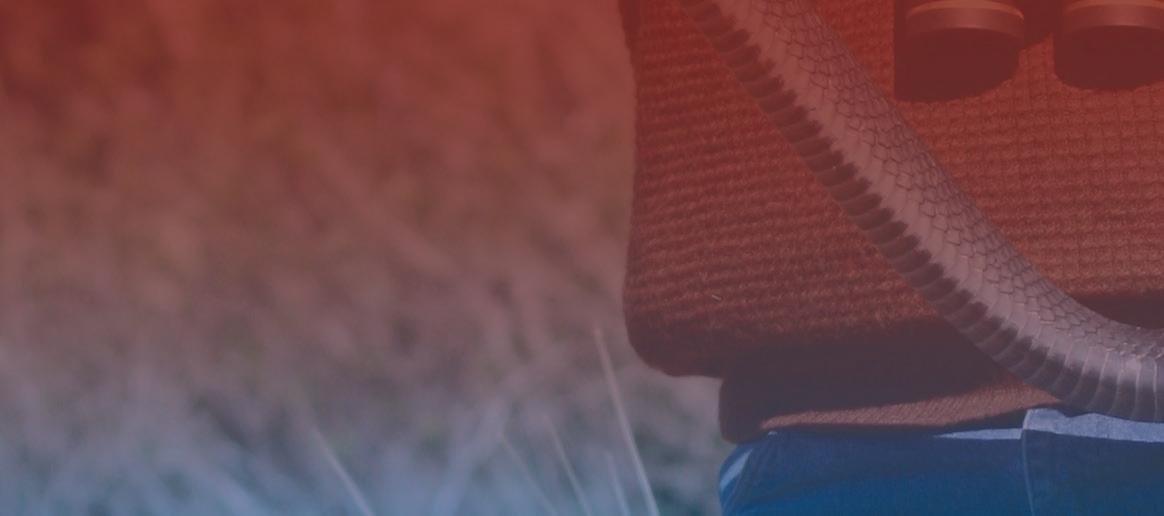

ARDIA NEVES
ADVERTISING DIRECTOR
DIRECT PHONE: ( 281) 869-5549
EMAIL: ANEVES@FISHGAME.COM
LARRY DALTON • OFFICE MANAGER/SUBSCIPTIONS 3431 RAYFORD RD. SUITE 200-408 SPRING, TX 77386 PHONE ( 281) 869-5511 • FAX (346) 348-2100
EMAIL: TFGOFFICE@FISHGAME.COM




TEXAS FISH & GAME (ISSN 0887-4174) is published bi-monthly by Texas Fish & Game Publishing Co., LLC., 3431 Rayford Road, Suite 200-408, Spring, TX 77386. ©Texas Fish & Game Publishing Co., LLC. All rights reserved. Content is not to be reprinted or otherwise reproduced without written permission. The publication assumes no responsibility for unsolicited photographs and manuscripts. Subscription rates: 1 year $24.95; 2 years $42.95; 3 years $58.95. Address all subscription inquiries to Texas Fish & Game, 3431 Rayford Road, Suite 200-408, Spring, TX 77386. Allow 4 to 6 weeks for response. Give old and new address and enclose latest mailing address label when writing about your subscription. POSTMASTER: Send address changes to: TEXAS FISH & GAME, 3431 Rayford Road, Suite 200-408, Spring, TX 77386. Address all subscription inquiries to TEXAS FISH & GAME, 3431 Rayford Road, Suite 200408, Spring, TX 77386.
Email change of address: subscriptions@fishgame.com.
Email new orders: subscriptions@fishgame.com.
Email subscription inquries: subscriptions@fishgame.com.
Periodical postage paid at Houston, TX 77267-9946 and at additional mailing offices. FISH & GAME AUDIO EDITION: LISTEN TO THE FULL ISSUE



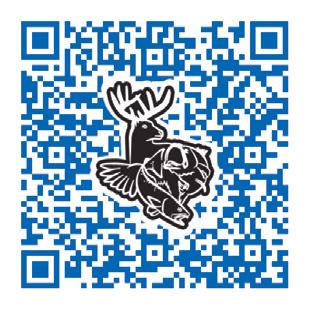
Scan this code to hear the AUDIO VERSION of the complete MAY/JUN 2025 issue!












State Legislature recently took out his frustrations with the Texas Parks & Wildlife Department by introducing a bill to abolish the department.
Perhaps inspired by the rapid- re budget slashing and wholesale agency shutdowns that the new Department of Government E ciency (DOGE) has been conducting in Washington, a bill was led on March 13 seeking to shut Parks & Wildlife down and divvy up its assets and responsibilities to three other separate departments.
According to the Houston Chronicle, the legislation may have been motivated by a longstanding beef this representative has had with the department over its treatment of the state’s deer breeders, and in particular its response to Chronic Wasting Disease.
Fortunately for those of us who live and work in what is, without argument, the richest outdoors environment in the country, the bill has apparently been tabled. Push-back was swi and intense. And it came from every corner of the outdoors enthusiast community—hunters, anglers, boaters, conservationists, nature lovers, environmentalists.
Although this legislative a ack on Texas outdoors sports may have been averted, we now have to add another potential threat to the growing list of hazards endangering the outdoors way of life. Anti-hunting activists, animal rights organizations, loss of habitat to the forces of nature and to human progress... and now the potential threat of irreparable damage from our own state leaders.
House Bill 4938 probably never would have made it to the governor’s desk, but it’s scary to think of the chaos it would have unleashed if it had. And now that this rst punch has been thrown, what’s to stop another a ack from a di erent direction— the commercial shing lobby, or some band of well-heeled barstool biologists who think




they know more about viral transmission statistics than researchers with decades of experience, and who might have the ear (or pockets) of a sympathetic legislator?
Texas Parks & Wildlife, like any governing body—federal, state, county, municipal, neighborhood HOA—certainly has its aws and we’ve been critical of many of their actions. But we’re also absolutely certain that without their stewardship of the state’s outdoor resources, Texans would not have anywhere near the wealth of fresh and saltwater shing opportunities, nor the abundance of game species for hunting—in a state with less than 5% publicly managed land—that TPWD has given us.
Just consider the scope of what Parks & Wildlife manages:
• 88 parks, natural areas and historical sites;
• Licensing and regulation of all fresh and saltwater shing and hunting;
• All recreational boat licensing and registration, boating safety and education;
• 50 Wildlife Management Areas covering a quarter-million acres in every ecological region of the state;
• Conservation of the vast diversity of habitat across the Texas range, from coastal marshes to high plains desert;
• Fisheries management that has built and maintained thriving populations of fresh and saltwater species from Florida-strain largemouth and striped bass to red drum and spo ed sea trout;
• Law enforcement embodied in a force of game wardens empowered with jurisdictional authority on par with Texas Rangers, who not only enforce game laws and stop poaching, but are sworn to enforce all state laws.
Many more functions and management responsibilities fall under the department’s command. Above is only a top-of-mind description of a fully mature organization that has been ful lling a broad set of missions


for three quarters of a century, since its conversion from the Texas Game, Fish and Oyster Commission into its modern incarnation and re-christening as the Texas Parks & Wildlife Department.
Understand this—if TPWD goes down, shing and hunting in Texas will su er, no ma er how its functions are peeled o and redistributed to other departments
It could have made sense to break such a large portfolio of critical missions into two or three di erent departments. But to completely shut down an agency with a pre y damn solid track record and saddle other existing departments—that already have their own challenges in a rapidly growing state— with huge new responsibilities is a recipe for Epic Disaster.

Whether House Bill 4938 was just DOGE inspired political theater, or simply an expression of personal frustration from a disgruntled legislator, we need to take it seriously. Because next time it might be a real threat to break the agency we count on to protect our outdoors resources.
ere is a thirst for government blood these days. God knows, every organization— whether it’s a bloated federal or state agency, or even a small two-man partnership—can always stand a healthy round of cost-cu ing.
But to take a chainsaw to a department as vital to Texas anglers and hunters as TPWD is not healthy. It’s just plain stupid.
Email Ardia at aneves@fishgame.com
Email Roy at rneves@fishgame.com




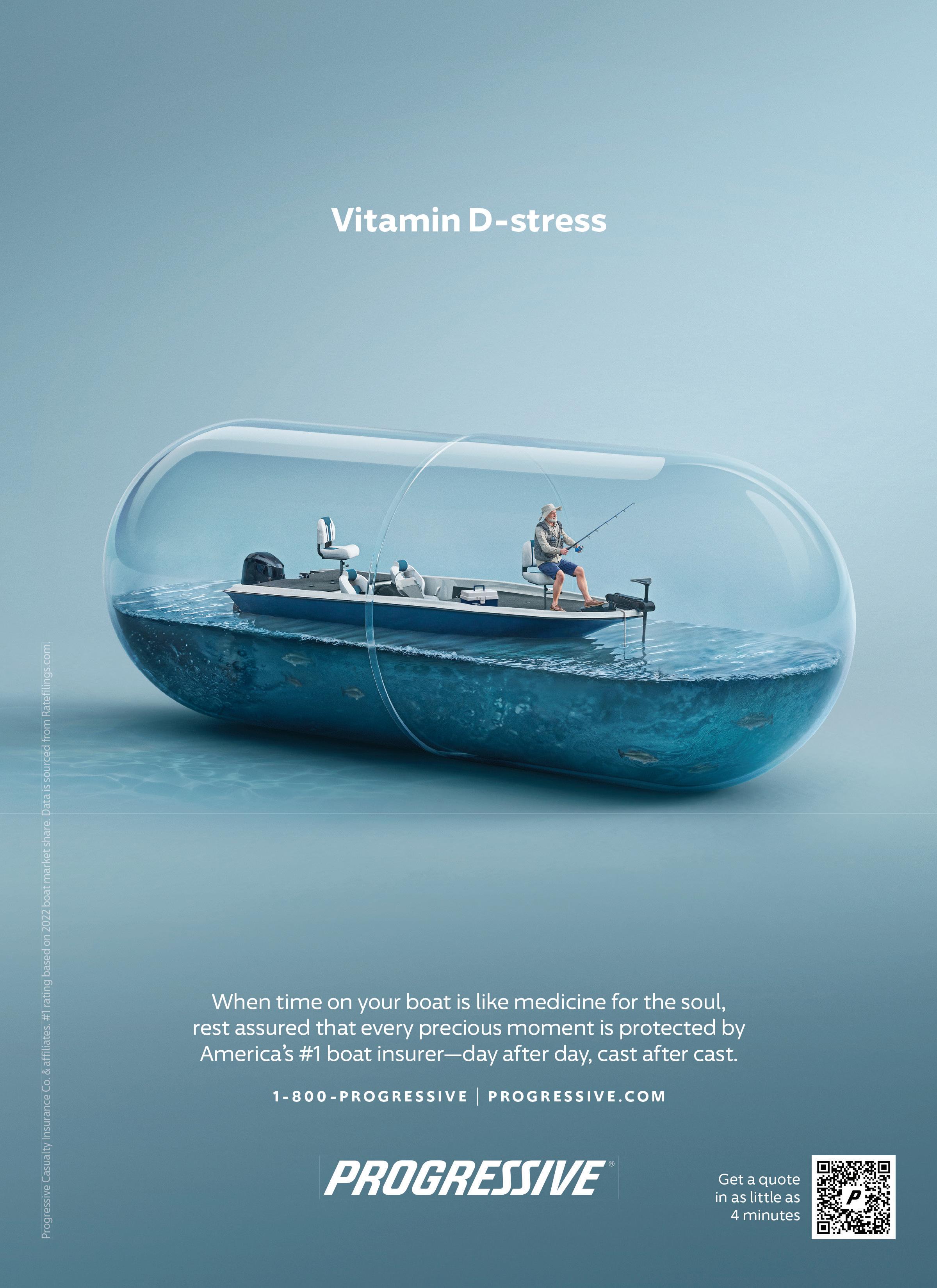












I JUST READ THE ARTICLE ON THE teen poaching crisis, and it really opened my eyes. I knew poaching was an issue, but I had no idea it was this bad among young hunters.
I appreciate how Texas Fish & Game laid it out straight—this isn’t just kids being reckless, it’s a real problem that’s only getting worse. We need to do more to educate young hunters about ethics and conservation before they get the idea that breaking the law is no big deal.
Maybe stricter penalties or be er outreach programs could help.
Jim Rodgers
I SAW THE PIECE YOU DID ON teen poaching, and while I agree it’s a problem, I wish more was said about how some kids don’t even know they’re breaking the law. A lot of these young hunters don’t have the right mentors, and I think we need more focus on education before we just blame
:: by TF&G READERS
them.
Some of these so-called “poachers” might not even know the rules because no one ever taught them. Maybe the state should focus more on outreach and making sure hunting laws are explained in ways kids can understand. Just my two cents.
Mark Wallace
Editor:It’s great to see people taking notice of this issue. Roy Neves, our publisher, has to take some credit because I have tried publishing the same investigations about issues in other states in other publications and no one would take it. I agree mentorship is paramount.
I LOVE HOG HUNTING, BUT FINDing a decent public spot in Texas is ge ing

tougher by the year. I read all the time about how we have a hog problem, yet when I try to hunt them legally, it feels like jumping through hoops. Either the land is locked up by private owners, or the public land has too many restrictions.
If we really want to control these hogs, why not open up more land or make it easier to hunt them year-round? Something’s go a give, because right now it feels like the only people winning are the hogs.
Travis M.
JUST WANTED TO SAY HOW MUCH I enjoyed Chester Moore’s Great White Shark seminar at the Houston Fishing Show. I learned a ton about these amazing sh and really liked hearing about the Gulf sightings. It was awesome meeting Chester and the TF&G crew at your booth, too. Y’all always put on a great event, and it’s nice to see real outdoors folks who care about Texas wildlife. Keep up the good work, and I’ll be back next year!
Emily Davis
Editor: anks for coming out to see us!
Email Your Comments to editor@fishgame.com








THE WATER WAS COLD, stained and rough.
Stormy seas had stirred up the sediments, creating brown-tinged visibility that only allowed me to see out 15 feet at best. And with subsurface temperatures in the lower 50s, the environment inside the shark cage I was in alone seemed surreal.
It was like some bizarre dream but then reality came crashing in. A small school of sh and a few squid had gathered in front of the cage and they all le in a ash.
Something spooked them.
And suddenly it was like someone piped in the “Jaws” theme as I saw a massive dark shape maneuvering below the cage. It would move in and out and then around and disappear.
At one point it kicked up the silt into the bo om of the cage and I feared being enveloped in darkness and maybe just a tad bit of what was swimming just below the line of visibility. at was the beginning of an incredible experience cage-diving for great white sharks in the Paci c Ocean in the Farallon Islands.
It was a dream born from seeing “Jaws” for the rst time as a li le kid watching an ABC Movie of the Week. I was too young to have seen it in theaters, but the lm had no less an impact on me on the small screen.
I was blown away at the idea of great white sharks and thought the characters Mr. Hooper and Capt. Quint were incredible.
I vowed to one day see great white sharks and that fateful viewing along with seeing Jacques Cousteau ocean specials inspired me to seek out such an opportunity. And it had a whole lot to do with my interest in the ocean and marine conservation.
is year is the 50th anniversary of “Jaws” and while there’s no doubt the landmark lm stirred up plenty of fear about sharks and might have even spawned some persecution of great whites, it has inspired many people to get into shark conservation.
Top great white researcher Dr. Greg Skomal told me last year he decided to study sharks when seeing Richard Dreyfuss’ por-




trayal of Hooper.







When I was 12-years-old my Dad took my friend Chris and I shing on the 61st St Pier in Galveston. at night some of the anglers were catching small bonnetheads.

I was blown away. is was my rst time seeing sharks in person and it all became very real to me that night.
“Maybe so,” Dad said.




I remember standing with my Dad staring at a full moon glimmering over the surf. I asked whether there were any great whites in the Gulf and even in Texas waters.
en in 2005 my friend Capt. Ryan Warhola saw a great white while shing at an oil rig about 55 miles out of Sabine Pass and I began a full-on investigation of their presence in the Gulf.
It was exciting to see sharks tagged by Ocearch pop up on the Gulf side of Florida a decade later and in 2021 Texas Fish & Game broke the story of their tagged great white that showed up about 125 miles o of Galveston.
As exciting as that was it was still distant to the public, but on Feb. 26, 2024, a great white shark closed the distance in a big way showing up 100 yards from the beach at South Padre Island.
“LeeBeth,” a 14 foot, 2,600-pound great white shark, breached the surface and allowed the tag a xed to her dorsal n to connect with a satellite. at fed her coordinates into the Atlantic White Shark Conservancy’s (AWSC) app “Sharktivity” app and made history.
For 20 years I have been investigating accounts of great whites in the Gulf and this story shi ed the dynamic of the topic in amazing ways.
LeeBeth was ed with a satellite tag by Capt. Chip Michalove of Outcast Sport shing and AWSC’s Megan Winton o the coast of South Carolina. A er leaving South Padre she went all the way up the Texas Coast, passing a few miles from the rig where Warhola had his encounter. en she went all the way up to Nova Scotia!
“LeeBeth has by far been the most ‘ping-happy’ shark of those tracked by our program,” said Megan Winton, AWSC Research Scientist.
“Every shark is di erent, and some spend more time at the surface than others. e

:: by CHESTER MOORE, JR. TF&G Editor-in-Chief

track from her n-mounted, real-time satellite tag is helping us be er understand the species’ migration in the Gulf and ll in the gaps associated with the other tag types we use to track the species’ movements.”
My interest in all of this dating back to “Jaws” has an exciting tie-in for the lm’s 50th anniversary.
I am producing a documentary called Gulf Great White Sharks: Return of an Icon and I am doing it with cinematographer Paul Fuzinski who you know from doing our Aptitude Outdoors column.
We will be debuting it at a public viewing and a special shark seminar at the Museum of the Gulf Coast in Port Arthur 2 p.m. Saturday June 21. at will be 50 years exactly to the weekend “Jaws” debuted in cinemas around the country and changed movie-going forever.
It also changed me forever as great white sharks have taken a bite out of my heart that have made me want to promote their education and stand for their conservation.
When I jumped into that shark cage 20 years ago, it wasn’t being brave. Heck, I was scared, excited and blown away all at once.
It was knowing if I didn’t do it that I would let a lifelong dream pass me by. And in a world that seems increasingly chaotic, we need to chase more of those dreams-even if those dreams sport razor sharp teeth.

(Go to www.gulfgreathwhites.com for details about the lm and viewing.)
Email Chester Moore at cmoore@fishgame.com







MY BAHAMIAN GUIDE,
Charles Whose-Last-Name-ICan’t-Remember, had a calm demeanor and osprey eyes. Both are excellent a ributes on a bone sh at.
“A single at 10 o’clock, moving le to right at 40 feet,” he said, planting the push pole and stopping the ski . “Nice sh.”
I was on the bow casting platform and suffering from an abrupt case of ji ers. “Nice sh” is not to be confused with “banana bone” or “pocket bone,” especially when Charles is rendering the verdict.
I stared wildly at the sun-sparkle of shallow sand and saw nothing moving. Bone sh are almost always moving.
“Point your rod. No, more le . ere. See him?”
“Yeah! Got him!”
e unsuspecting bone sh weighed at least six pounds, maybe seven. It was a sh capable of ripping an entire 8-weight y line and 100 yards of backing line across the at, the prize that sun-blasted saltwater anglers invest big money in time and travel to encounter.
I released the y from the pinched ngers of my le hand and rolled the belly of y line o the rod tip and into the air. A quick glance underfoot con rmed that the stripped coils on the deck were clear.
Two quick double hauls gained distance, and I drilled a tight loop about six feet ahead of the slowly moving sh. Looking good, I thought.
I failed to allow for the gusting side-angle wind—a rookie mistake. A billow caught the outgoing line, and the No. 4 bead-chain Mantis Shrimp hit the sh right between the eyes. e violated cruiser reacted as only a startled bonesh can, blasting away like a strobe of streaming light. All that remained of the plumbered opportunity were pu s and clouds of marl.
My shrill epithets followed the blistering wake across the at. e diplomatic Charles leaned on the push pole and shrugged. “Mon, you hit a li le close on that one.” at incident last December was a reinforce-











ment that it’s di cult to outgrow the ability to screw up when sight casting on the ats. Maybe this is why it is so addictive. Bone sh launched the craze almost 75 years ago (Florida Keys and Bahamas), but our own red sh o er a similar high-stakes game.


but they are plenty game, especially in mere
Reds lack the Corve e gearbox of bone sh, but they are plenty game, especially in mere inches of tide, and the shallow clear-water bays and back “lakes” of the lower and middle Texas coast are prime for sight casting. And, of course, the fabulous delta complex of Louisiana o ers excellent potential.

::


by JOE DOGGETT TF&G Senior Contributing Editor

Reds “tail” like bone sh, inverting to root on bo om, and they cruise the shallows like bone sh, either as singles or in small pods. As a bonus, bold red sh in shallow water are easier for average eyes to spot, and they tend to be less spooky and more “grabby.” An aggressive red will snatch a variety of shrimp and crab pa erns as well as bait sh streamers and surface poppers.
Bone sh or red sh, the ats and shorelines are the ideal venue for the specialized drill of sight casting with a y rod from a ski . e disciplines are the same and the ability to choke in the clutch remains constant. Following decades of juggling the “thrill of victory” and the “agony of defeat” I feel quali ed to o er a few pointers for improving the odds on the former.
First, don’t forget the polarized sunglasses —no, not your go-to pair. I’m talking about the backup pair that should be in your boat bag. Vision is critical in this game, so don’t gamble a big trip on a single pair.
Aborting a sure cast to a big sh by stepping on the outgoing y line is one of the most infuriating blunders in all of y shing. Whenever possible, I sh barefoot, trusting to sensitive toes to feel for si ing coils on the deck. Clumping around in wading boots or beach sandals with Velcro straps is begging for a snagged double haul and a cackle of glee from your shing partner.
Regarding stripped line, pile no more on the deck than necessary for a realistic cast. is minimizes potential windblown tangles, and when a hooked sh accelerates, a short surplus is quicker and easier to feed through the rod guides. A bu wrap or a handle wrap can be devastating.
Remember the clock coordinates, with the bow being 12 o’clock. is sounds simple but it’s easy for a ustered caster to get confused. If you want to feel like a proper chump, listen to an impatient guide shout “No, no! Your other 2 o’clock!” Trust me, this is embarrassing.
Keep in mind that the guide almost certainly is be er at spo ing sh by si ing through the moving tableau of sand and grass and rubble and chops on a shallow at. is especially is true when the lights go out behind a cloud.
If nothing else, the stern poling platform o ers a higher vantage for looking down through the water ahead. Leave the long game to the professional and concentrate on scanning close, inside 30 feet, and be prepared for a quick draw on a sh that appears from nowhere. It happens o en. A sidearm presentation from a predatory crouch should close the deal.
Once you’re cocked and locked on the bow, with the y in one hand and the rod in the other, enough weight-forward belly should be o the rod tip for a quick load. But not too much line. A long belly dragging alongside might snag oating grass or, worse, slide under the bow and hang on the hull. Naturally, that’s when a big sh waddles past.
Strive to minimize false casts. Frantically fanning the air eight or 10 times wastes time and might spook a ski ish sh. Oh, yes, learn to double haul; your ats game will remain forever lame without this supercharger that increases line speed for extra shooting distance.
Once that tight loop delivers the y, take up any slack and keep the rod tip low to the water—and do not “trout strike” by li ing the rod tip high. Always strip strike with a straight pull with the line hand.

And, bone sh or red sh, be prepared to experience the soaring highs and crushing lows that await on every at.
Email Joe Doggett at ContactUs@fishgame.com














ONE OF THE BIGGEST CHALLENGES INLAND anglers face in Texas, especially in the western 2/3 of the state where large, navigable rivers are scarce, is access.
Texas is 97 percent private land and that means most of the land around streams and rivers is private.
Texas Parks & Wildlife has a Q&A on these issues we thought would give an important look at an issue we will be diving more into in our three-times weekly e-newsle er. is is directly from TPWD
and is a great place to begin looking at the issue.
What is considered a public stream?
In Texas a stream is public if it is “navigable in fact, ‘or’ navigable by statute.” ere is no precise test for whether a stream is navigable in fact. e term is based on the idea of public utility. One court has observed that “[w]aters, which in their natural state are useful to the public for a considerable portion of the year, are navigable.”
A stream is navigable by statute if it retains an average width of 30 feet from the mouth up.
It is important to understand that the entire stream bed is to be included in the width, not just the area covered by water on a given
An angler flyfishes on the Guadalupe River for rainbow trout, stocked annually by Texas Parks & Wildlife.

day. A navigable stream may be dry part of the year but does not lose its character as a navigable stream.
To complicate ma ers, some Texas land titles originated with Spanish or Mexican land grants, and the law of Spain and Mexico did not distinguish public and private streams on the basis of navigability. Streams were valued primarily as a source of water for household use and for irrigation, rather than a way to move people and goods. So when the sovereign granted land, perennial streams were retained for public use, regardless of navigability, so as to make as much land as possible capable of se lement. A stream is perennial if it ows most or all of the year. In determining the rights of holders of title under Mexican grants, the laws of Mexico

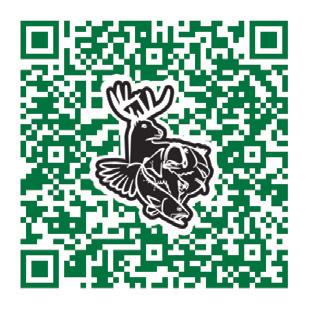
were in e ect when the grants were made control. So in counties that contain Spanish or Mexican land grants, there are an unknown number of perennial streams which are public streams, even though they may not be navigable.
Q: How do I determine the boundary of a streambed?
e Texas Supreme Court has stated that the bed of a stream is “that portion of its soil which is alternately covered and le bare as there may be an increase or diminution in the supply of water, and which is adequate to contain it at its average and mean stage during an entire year, without reference to the extra freshets of the winter


In Texas, a stream is navigable if it retains an average width of 30 feet from the mouth up, including the entire stream bed, not just the area covered by water on a given day.

or spring or the extreme droughts of the summer or autumn.
Not clear? Again, the Texas Supreme Court: e streambed is that land between the “gradient boundary” on each bank. e gradient boundary is de ned as “a gradient of the owing water in the stream and is located midway between the lower level of the owing water that just reaches the cut bank and the higher level of it that just does not overtop the cut bank.” Clear as mud? Blame it on those civil judges.
Q: What if the stream is dry?
A navigable stream does not lose its public character during periods of low water. A stream is navigable if the bed of the stream averages 30 feet wide from the mouth up, regardless of the actual water level on a given day.
Q: What is a public lake?
e typical public lake in Texas was created by building a dam on a navigable stream. When a navigable stream is dammed, the resulting lake is a public lake, and the public may boat and sh on all of the lake’s waters, not just that part directly above the streambed. erefore, a property owner may not fence o any portion of such a lake. For other lakes, the test is whether the lake is navigable. Typically, the small natural lakes in Texas are held to be non-navigable, and therefore subject to private ownership and control. Manmade stock tanks and ood control ponds are usually non-navigable as well. e public has no right to boat, sh, or hunt in or on the waters of private lakes, and hunting or shing without landowner consent is a crime. In order to encourage outdoor recre-


ation, the legislature has limited the liability of landowners who allow the public to use their property for recreational purposes.
Q: But doesn’t the state own the waters of ALL lakes and flowing streams, plus the fish that live there?
Yes, the state does own the water of every lake and natural stream, and the sh that live there. But that does not give the public the right to sh or boat in private lakes or streams.
Q: Some landowners in my county have deeds to the riverbed. Can they exclude the public from their part of the river?
Not if the river is navigable. e policy of the government of Texas, expressed in stat-













Texans may enjoy many activities on public waters, but they may not cross private property to gain access, which poses a challenge in a state where 97% of the land is privately owned.


Bill, the state relinquished to the adjoining landowners certain property rights in the beds of some navigable streams. However, this statute declared that it did not impair the rights of the general public and the state in the waters of the streams.
So even if a landowner’s deed includes the bed of a navigable stream, and taxes are being paid on the bed, the public retains its right to use it as a navigable stream.




ute since the days of the Republic, has been to retain the beds of navigable streams as public property. However, the state surveyors did not always adhere to this law, and some land grants purported to include the beds of navigable streams. To remedy this situation, in a 1929 law known as the Small
It is a fairly common myth that a person boating along a “Small Bill” stream may not set foot on the streambed if the landowner forbids it. is is based on the notion that a person who steps into the streambed has entered onto private property within the meaning of the criminal trespass law. is may have some applicability when the waters of a stream leave its banks and a boater navigates out of the streambed and steps onto the adjacent private lands, or on coastal land when tide waters cover private property. But the general public has the right to walk within the boundaries of any navigable streambed, even if there are private ownership rights under the Small Bill.
Texas courts have recognized that a member of the public may engage in a variety of activities in, on, and along a public lake or stream. Besides boating, persons may swim, oat, walk, wade, picnic, camp, and (with a license) sh. ese activities must be conned to the waters of the lake or stream and the streambed. e public does not have the right to cross private property to get to or from public water. In fact, that can constitute criminal trespass, if the other elements of the o ense are present. With some exceptions, driving a motor vehicle in the bed of a navigable stream is prohibited, other than the Canadian River and the Prairie Dog Town Fork of the Red River.
Do you have concerns about stream access? What are they? Shoot us an email at cmoore@ shgame.com and we will do our best to address them in forthcoming articles to raise awareness of stream access dos and don’ts in Texas.

THE THRILL OF HOOKING into a sleek and powerful kingfish, battling a stubborn ling, landing a monster red snapper, or chasing dorado along weedlines makes for an unforgettable experi-
ence and can lead to big STAR wins.
King mackerel thrive in the warm waters of the Gulf during summer, making them a prime target for STAR

anglers. They are commonly found near reefs, wrecks, oil rigs, and along current edges where baitfish gather.
Best Gear & Setup: Use a medium-heavy to heavy spinning or conventional rod and reel with a 20-40 lb test
monofilament or braided line. A wire leader is essential to prevent their sharp teeth from cutting the line.
Bait Selection: Live bait such as mullet, menhaden, and cigar minnows are the best choices. A stinger rig

increases hookup rates as kings tend to strike from behind.
Trolling Tactics: Troll live bait or brightly colored lures behind the boat at 6-8 knots. Vary depths until you locate the feeding fish.

Some of the biggest kingfish of the summer are landed in June, so now is the time to gear up and hit the offshore waters.


A big bonus for anglers shing around rigs is the cobia, also known as ling. ese sh love structure and frequently hang around oil platforms, standpipes, je ies, and buoys.
Unconventional Technique: Rev up your boat motors, take a paddle, and slap the water’s surface. While it may seem counterintuitive, this noise can bring cobia up from the depths.
Baiting for Ling: Toss a handful of cut pogies overboard and use live crab or fresh cut bait on circle hooks.
Tracking Cobia: Recent research suggests that many cobia return to the same spots year a er year. If you missed out on a big one last summer, it might still be there this season—and even hungrier!
In STAR, a solid cobia catch can earn you serious prizes, making it well worth the e ort to target these structure-dwelling sh.
While catching red snapper in the Gulf isn’t di cult, nding and landing big ones is another story. To increase your chances of winning the STAR snapper division, follow these key tips:
Find Lightly-Pressured Structures: While rigs are common snapper hotspots, they are heavily shed. Seek out wrecks or outer structures away from major rig elds.
Use the Right Bait: Live bait like pin sh and croaker is o en overlooked but highly e ective. If unavailable, jigs tipped with fresh cut bait are a good alternative.
Fish the Right Depth: Snapper are typically found at 50-200 feet. Don’t just drop bait to the bo om—use electronics to locate the sh at speci c depths and adjust your technique accordingly.
Red snapper are not only great ghters and excellent table fare, but they also present a valuable opportunity for STAR participants to win big.
Dorado, commonly found along Texas Coast weedlines, are aggressive feeders and an exciting target for o shore anglers.
Locating Weedlines: Sargassum accumulates in Gulf currents, creating oating habitats for bait sh and a racting large predators like dorado. Look for dark patches or lines on the water’s surface, using polarized sunglasses for be er visibility.
Gear Up Right: A 7-8 foot medium-heavy rod paired with a high-speed reel works best. Use a 30-50 lb braided mainline with a 4-6 uorocarbon leader (40-60 lb test). Live bait options include ballyhoo, blue runners, and mullet.
Trolling Strategies: Troll at 5-7 knots along weedlines, deploying 2-3 lines at different distances. If you spot dorado near the surface, cast live bait toward them and allow it to dri naturally.
Dorado are fast and aggressive, making them a rewarding catch both for sport and

in the STAR competition.
Fishing the CCA-STAR o shore division requires skill, strategy, and an understanding of how each target species behaves. Whether chasing king mackerel around

wrecks, luring cobia from rigs, searching for big red snapper in lesser- shed waters, or trolling for dorado along weedlines, preparation is key. June presents the best opportunity for some of the largest catches of the season, and with these expert tips, you can maximize your chances of landing a prize-winning sh.
Tight lines and best of luck in STAR!

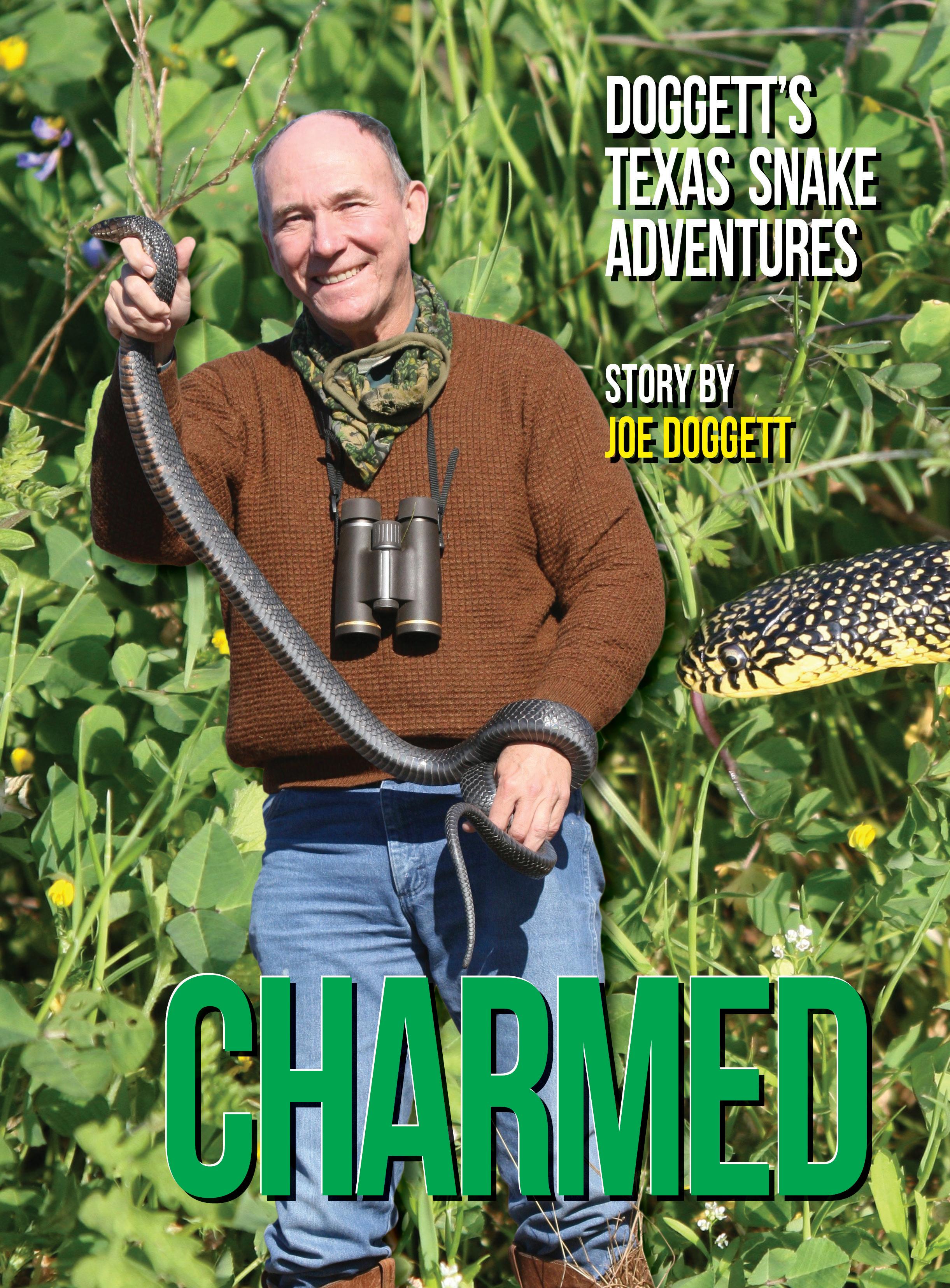

WATER SNAKE WAS BETTER THAN A RIBbon snake, and a hog-nosed snake was better than a water snake, and a rat snake was twice as good as the whole passel in a sack.
That was our standard of measure during junior-high snake collecting days along the banks of Houston’s Brays Bayou. Back in the late ‘50s and early ‘60s, that uncut and natural drainage was an amazing strip of wildness “snaking” through the southern tier of the growing urban sprawl.
Our bounty represented a microcosm. Texas boasts at least 72 snake species, by far the most of any state (if various subspecies and intergrades are included the count is more than 100).
The Lone Star State’s size is not the whole story; it has 10 ecological regions (or six biotic provinces). Regardless of how the vastness is environmentally sliced and diced it provides an unmatched variety of habitat. And generally temperate conditions encourage prosperity among cold-blooded reptiles.
I can document 10 species and subspecies in the two-to three-mile stretch of urban bayou within reach of our long-ago forays with angle-iron snake sticks, muslin collecting bags and knee-high rubber boots. Several were scarce and others common, but all were native.
The confirmed Brays Bayou denizens: Texas rat snake, eastern yellow-bellied racer, rough earth snake, Texas ground snake (Dekay’s snake), western ribbon snake, eastern garter snake, rough (keeled) green snake, yellow-bellied water snake, diamond-backed water snake, eastern hog-nosed snake, speckled king snake, southern copperhead, and Texas coral snake.
For several friends, snake collecting was a passing fancy, a way to tap into the wildness of the bayou, along with trapping the odd possum or fishing for short-nosed gar or plinking with BB rifles.
But I was serious about the study of reptiles—her-
petology. I had a growing collection of books. Classics were North American Snakes (1939) and Thrills of a Naturalist’s Quest (1947), Raymond Ditmars; Adventures with Reptiles, the Story of Ross Allen (1951), C.J. Hylander; Snakes and Snake Hunting (1957), Carl Kauffeld; and A Field Guide to Reptiles and Amphibians (1958), Roger Conant.
Those authors were among my childhood idols, and they were not side-show hucksters. Ditmars was curator of the prestigious Bronx Zoo; Allen was founder of the Reptile Institute in Silver Springs, FL; Kauffeld was director of the Staten Island Zoo; and Conant was curator of reptiles at the Philadelphia Zoo.
Our real-life herpetological hero was John Werler, curator of reptiles at the nearby Houston Zoo in Hermann Park. He was tolerant of star-struck kids and went on to become curator of the entire zoo. But he remained a “snake man.” He co-authored with James Dixon in 2000 the monumental 437-page text, Texas Snakes, Identification, Distribution, and Natural History.

Back in the Brays Bayou days, I would have been stunned, utterly blown away by such a comprehensive book defining local snakes.
I was an only child of loving parents, neither of whom had any particular interest in the outdoors. Being often alone, I found solace and satisfaction in wandering the banks of the old bayou—a fledgling “Naturalist’s Quest.”
My collecting perimeter expanded, adding green water snakes, broad-banded water snakes, and salt marsh snakes from Sheldon Reservoir to the southeast, and western pigmy rattlesnakes and western cottonmouths from the Memorial area on the west side (oddly, while cottonmouths were semi-common
around certain Houston-area drainages, we never found one along our stretch of Brays Bayou).
e big prize, literally, was the Lindheimer’s rat snake. Most of our catches were less than three feet in length, but a mature rat snake might measure ve to six feet—a double handful of serious snake. One spring morning, on the south bank of Brays Bayou near Sco Street Bridge, I caught one that taped 6-feet, 9-inches. e fact that such a creature thrived between North and South MacGregor streets only con rmed the rightness of the old bayou.
Elaphe obsoleta lindheimeri was named a er Ferdinand Jacob Lindheimer, a 19th Century naturalist acknowledged as the father of Texas botany. Shortly a er the Alamo fell, he presumably was poking around the Hill Country looking for a morning glory (Ipomoea lindheimeri) and bumbled onto and catalogued the writhing coils of a ne rat snake specimen.
Why subsequent experts saw t to dismiss Lindheimier and change the name to Texas rat snake or, worse, western rat snake is a mystery. To old-timer snake collectors the undeniable pedigree still stands (“Wow! A big Lindheimer’s!”), and I grudgingly concede only because Werler used “Texas rat snake.”
My rst exposure to native snakes outside the Gulf Prairies and Piney Woods ecoregions occurred during the early ‘60s. My father was an English professor at the University of Houston and two of his colleagues, Wilson Hudson and Francis Abernethy, were long-standing members of the Texas Folklore Society.
ey encouraged our family to join them at the annual April meeting. at year, the site was in West Texas—Midland, with a side trip to Monahans Sandhills State Park. e arid terrain below the visitors’ center at the massive Monahans dunes was spiked with thornbrush and sagebrush, a panorama right out of Walt Disney’s e Living Desert movie, and spring is prime snake season—dear old dad!
Rather than listening to the readings and lectures from folklore luminaries such as J. Frank Dobie and Mody Boatright, I bailed to the beckon of the desert. I had no collecting
Inset: Doggett with a catch-and-release indigo on a Webb County deer hunt. Background: A speckled king snake at Quintana Beach in Freport.
equipment other than a semi-straight stick but was thrilled to wander and look.
e morning was clear and mild, favorable for snake movement, and I caught and released a new species—a bull snake. e impressive snake was about four feet in length. Like the rat snake it was a constrictor, but with thicker girth and an irritable a itude. A crescent of bleeding toothmarks across the right wrist a ested to the fact that outdrawing a jacked-up snake is di cult; however, a non-venomous bite comes under the heading of no big drama.
e super cial scratches from the tiny teeth are like raking a vine of briar thorns. During those early years I was bi en dozens of times—ribbon snakes, water snakes, rat snakes—and never had a complication. irty minutes later I stirred up a major rst—a western diamond-backed ra lesnake. It was coiled near a thick mo e of brush and prickly pear. e alarmed ra ler was mature, about the length of the bull snake but heavier and buzzing with an undeniable aura. William Blake’s “tiger, tiger burning bright” is not the only creature with “fearful symmetry.”
e diamondback bowed up in an awesome display as I feinted with the stick. e bulbous head and si ing coils and furious tail radiated danger. I was stunned. Whoa—Ross Allen and Carl Kau eld and John Werler might hand-grab that thing, but no way I’m ge ing near it!
My few piddly copperheads and an aptly named 16-inch pigmy ra lesnake were not remotely in the same league.
Kau eld proudly wrote in Snakes and Snake Hunting, “If we be permi ed to verge on the sensational, our own diamondback ra lesnakes are among the world’s rst four largest and most deadly snakes: the king cobra, the bushmaster, and the fer-de-lance are its only rivals.”
He was mainly referring to Crotalus adamanteus, the eastern diamondback of the southeastern coastal states. is formidable pit viper has been documented at more than eight feet in length, with a few sketchy reports of 9 footers. e western diamondback comes in about a foot shorter on an honest tape (snake stories like sh stories tend to grow, and snake skins or mounts can be stretched). But a live ve- or six-footer of either issue is a huge thick snake with large venom sacks and long fangs.
Our C. atrox might be a tad shy against its eastern counterpart, but it is far more plentiful
over a greater range. And it is more aggressive when cornered—not that any logical individual could blame a snake on its own turf for ring back when harassed.
For be er or worse, Texas has another rst—the mother lode of these world-class pit vipers. e diamondback ra ler is common across the Hill Country and South Texas, and downright plentiful along the salt grass regions of the middle and lower coast.
Texas tallies between 1,000 and 1,500 venomous snake bites per year, and most are from diamondbacks and urban copperheads. e upside is that only one or two per year are fatal—copperheads are small snakes with weak venom and the diamondbacks usually are within an hour or two of emergency rooms and antivenin injections. A bad bite, of course, is a miserable and potentially life-threatening ordeal.
On the Christmas following the Folklore Society trip I received my most memorable gi . It was an impressive pyramid-type cabinet of dark varnished hardwood on a bench of short legs—three rectangular snake cages, two on the lower level and a larger one on top. Individual glass panes slid back and forth on aluminum runners, and each cage interior was painted at white and sported a socket for a small lightbulb activated by an exterior toggle switch.
Werler, himself, would have nodded approval, and I was overwhelmed. e piece of furniture meant my mother had consented to allow several harmless snakes inside the house. e major move from rough cages of orange crates and hardware cloth on the back porch was an acknowledgment that I was focused, that herpetology represented a legitimate path forward.
e best part—my thoughtful father did not drive to the nearest “Snakes R Us” store and purchase the elaborate cage. He and a handy neighbor, Fred Wye, designed and constructed it in Fred’s garage. (“Oh, it’s nothing, son; I’m just helping Fred make a cabinet for his record album collection.”)
A parade of the usual Brays Bayou suspects passed through the sliding-glass portals, and several non-resident standouts were a four-foot corn snake, a ve-foot Florida king snake, and a gorgeous six-foot eastern indigo snake. e Naturalist’s Quest was expanding, and herpetology was thriving.
It didn’t last.





ground and we’re starting to see them up and around with the does! From what I’ve seen so far, looks like we’re going to have a pre y good fawn crop this year. And, we should have pre y good herd recruitment as a result. “Looks like the predator control we did late winter is paying o ” said David Co on, whose property is not far from the Trinity River, east of Dallas. Before I could comment David added, “Not only that, but bucks are starting to get interesting again. Seeing what looks like the makings of a good antler year!”
I was thrilled to hear what he had been seeing on all accounts. is mostly because of the habitat and herd management programs we established and started implementing four years ago. E orts were most likely really going to start paying o in big way come the fall of 2025. Some of those steps included selective controlled burns to remove old bunch grass which when burned had been disked to encourage forb growth. In other areas selected trees where there was a dense canopy had been removed so all sunlight could reach the ground to encourage forb and woody browse growth. e ranch had also changed their supplemental feeding program to incorporate Double Down feed into a year round feeding program. e la er was suggested because sometimes we forget we do not feed deer, we feed the micro- ora in a deer’s digestive system which breaks down what the deer eat. Every time their diet changes, the exiting microbes die and have to start all over once again. Double Down feed also takes into consideration the deer’s energy needs. “Energy” is particularly important to a deer’s general health, including antler development and does producing healthy fawns.
We had also properly harvested both bucks and does. Having for the past three years primarily removed management bucks, those older aged bucks with less than desirable antlers. Not concerned about them passing on their genes, but they eat as much if not more than a younger

buck with much be er antler potential.







We also carried on a proper doe harvest, based on buck to doe ratio and deer density.





into the fawns seen. ese gures are based on

I mentioned both fawn crop and recruitment. e fawn crop is essentially the number of fawns born, and usually expressed in terms of a percentage by dividing the number of does into the fawns seen. ese gures are based on incidental observations, which is something as a biologist I highly encourage. Starting as soon as bucks show su cient antler growth where they can be easily distinguished, start keeping a running record of the number of bucks, does and fawns observed each time you go to “the eld”, meaning your property or hunting lease. Makes no di erence if you see the same deer again and again. Keeping record of what you
::





see throughout the late spring, summer and even fall provides good data as to determining your buck to doe ratio, fawn crop and later in the fall, fawn recruitment.
“Recruitment” is best described as those fawns that live to become at least one and a half-year old deer; taking into account not all fawns born survive into the fall season when does start weaning their o spring. e be er the day-to-day nutrition, and fewer numbers of predators, primarily coyotes and bobcats, the greater the herd recruitment.
By June bucks are starting to once again become “interesting.” Antler development is well on it’s way and you can at least start imagining what their racks will look like in two more months. It is truly amazing how
Email Larry Weishuhn at ContactUs@fishgame.com to
by LARRY WEISHUHN TF&G Whitetail Hunting Editor


rapidly antlers grow. You’ve heard me state this before, but it bears repeating. Texas bucks mature at 4-years of age. By then all their long bones are fully developed as are essentially their muscle systems. Up to the age of four, body development always takes precedence over antler development. A er four years of age any daily nutrition not required for simple body maintenance can be channeled into antler development. is is why four-year and older deer generally have bigger antlers.
ere is however “a kicker in the deal.”
Much of the breeding is done by 2 to 4-year old bucks. If they get severely rundown because of the rut, their antlers may not be as big as one would imagine the following fall. I’ve seen some truly impressive 3-year old 10-point bucks get severely run down from the rut and revert to producing very mediocre 8-point racks as 4-year olds. Given a chance to reach 5-years old, that same buck will develop exceedingly impressive antlers.

is is one of the reasons I caution hunters about shooting “management 8-points.” at 4-year old 8-point you shot, le to recover, might at 5-years of age have been that absolute monstrously antlered buck of your dreams.
May and June? Continue doing predator control and learn what you can about the property you hunt or plan to hunt this fall. Spend time shooting your ri e, handgun, muzzleloader, bow and/or crossbow. Learn your gun’s, bow’s or crossbow’s capabilities and yours’ with them. Doing so will pay o come this fall!



MATT WILLIAMS IS A distinguished outdoor writer whose extensive contributions to Texas Fish & Game Magazine have solidi ed his reputation as a leading authority on freshwater shing through his Texas Freshwater column.
Ma has been closely assosiated with Texas Fish & Game almost from the beginning. He has served as freshwater shing editor for a major portion of the magazine’s history, his columns and feature stories appear-

ing in most of its more than 400 issues.
He has also proven himself as an expert on hunting in the Lone Star State through his many features in the magazine and beyond.
His engaging storytelling and in-depth knowledge have made him a trusted voice for outdoors sports.
His articles o er readers valuable insights into e ective hunting strategies, innovative shing techniques, and pressing conservation issues. Williams’s ability to intertwine practical advice with compelling real-life




tournaments and pro les successful anglers. For instance, he highlighted the achievements of Texas anglers in recent shing tournaments, providing detailed accounts of their strategies and successes.
And no one does that quite like Ma Williams. He has a way of capturing the details of what pro anglers and guides are doing and make it work speci cally for the Texas market. It’s one reason his column has been important to Texas Fish & Game for so long.

stories has garnered him a dedicated readership.
Williams’s contributions to the outdoor community are not con ned
to Texas Fish & Game Magazine. He has penned numerous articles for publications like the Lu in Daily News and Beaumont Enterprise, where he reports on local shing
e fact he can make a 90-degree turn from his regular shing beat and give you a super informative article about a legal issue involving hunting shows how good he is. rough his proli c writing and active participation in the outdoor community, Ma Williams continues to be a positive in uence on the outdoors industry in Texas. His work not only educates readers but also fosters a deeper appreciation for the state’s rich hunting and shing heritage.









WE’RE AT FULL STRIDE
of another season in big league bass shing and on the heels of another Bassmaster Classic, this one held back in March at Lake Ray Roberts near Denton.
oughts of the late Bryan Kerchal always come to mind when someone mentions the sport’s most revered event. Kerchal won the 24th annual ‘Classic’ held on 15,500-acre High Rock Lake in Greensboro, N.C. way back in 1994. Sadly, his promising career was cut tragically short about 4 1/2 months later. Kerchal was killed when American Eagle Flight 3379 crashed about four miles from the Raleigh-Durham International Airport in North Carolina while traveling between sponsor engagements. He was only 23.
e lessons the young angler from Newtown, CT, taught with his legendary victory continue to resonate with anglers around the globe. Especially those hopeful, club-level warriors with tall aspirations of making it big someday.
e ‘Classic’ win earned Kerchal a spot in professional bass shing history and made him an instant inspiration to amateur anglers everywhere. It also made a strong case for his innate ability to think on his feet. A fast food cook who worked nights at the Ground Round restaurant at the time, Kerchal was the youngest competitor in the ‘Classic’ mix that year. BASS founder and emcee, Ray Sco , sometimes dubbed him the “Hamburger Flipper.”




sport’s most coveted championship trophy in BASS’ 50-plus year history. Followers of the sport may recall how Kerchal got onto the winning pa ern that resulted in his dramatic ‘Classic’ win 31 years ago. For those who don’t, here’s the skinny: Kerchal spent much of his pre-practice


:: by MATT WILLIAMS TF&G Freshwater Fishing Editor
turn in three consecutive limits.
Adding to the ‘Classic’ lore was the bassshaped whistle Kerchal carried in his pocket throughout the tournament at the behest of a close friend, Roy Rickis. He tooted on the green whistle to commemorate each sh he caught.


Several lessons can be learned from the outcome. e most obvious is pro bass shing has no boundaries and that anyone can beat the odds and rise to the top when all the stars line up.
Another is that anglers should always keep an open mind and be willing to try something di erent when other stu just isn’t cu ing it.

Kerchal quali ed for the big show through the BASS Federation (now called BASS Nation), a grassroots organization built around bass clubbers from all around the country. Roughly four years a er joining the Housatonic Valley Bassmasters bass club, he became the only amateur to win the
shing structure away from the bank. He didn’t have much luck until he found a couple of torn red shad plastic worms oating in the water. Assuming someone had caught sh on the worms, Kerchal dug into his own stash, found something similar and started catching sh around docks. Come tournament time, he applied what he’d learned weeks earlier and put a whipping on a star-studded tournament eld of 40 anglers. Kerchal, who re ned the pa ern by downsizing to light line and a small bullet weight - was the only angler in the event to

Li le things can sometimes mean a lot when shing for bass. is holds especially true when shing on small water in a high-pressure situation at a time of the year when there are an abundance of sh holding around shallow cover. Changing up from what everyone else is doing can at times be the ticket to ge ing more bites and pu ing more sh in the boat. at’s what Kerchal did.

His decision to dare to be di erent earned him a $50,000 pay day and a Bassmaster Classic win that is arguably among the most legendary outcomes the sport has ever seen.
Email Matt Williams at contactus@fishgame.com
HERE ARE FEW INLAND
saltwater fishing experiences more exciting than pursuing redfish across the vast, shallow seagrass flats on the Texas Coast.
These shallow-water battlegrounds, from the Lower Laguna Madre to Christmas Bay, are where anglers test their patience, skill, and perseverance against one of the most formidable inshore game fish.

For those willing to embrace the challenges like blazing sun, shifting tides, and the ever-present Gulf breeze, success in the seagrass flats awaits anglers.
Seagrass flats are the lifeblood of the Texas coastal fishery, offering shelter and sustenance for redfish, speckled trout, flounder, and countless other marine species. These underwater prairies composed of species like shoal grass and turtle grass, create a unique and essential ecosystem. Shrimp, crabs, mullet, and baitfish congregate in the seagrass, drawing in the ever-hungry redfish that prowl these shallows.
e challenge of targeting reds in the ats lies in their wariness. Unlike deeper waters where they have a greater margin for escape, ats shing requires an angler to be stealthy, observant, and well-versed in how these sh behave under di erent conditions.
One of the most thrilling sights in inshore shing is the sight of a red sh tail waving above the surface as it roots through the grass for crabs and shrimp. Tailing red sh are a y angler’s dream, but they also o er conventional tackle enthusiasts an opportunity to put their casting accuracy to the test.



e key to capitalizing on tailing reds is approach. If you’re wading, keep your steps slow and deliberate to avoid sending pressure waves through the water. If you’re in a kayak, use the wind to dri silently into position. Make sure to present your bait or lure gently—casting too aggressively can send your target eeing before you even have a chance.
For many Texas anglers, wade shing is the method of choice when hunting red sh in the shallows. It allows for direct engagement with the environment, o ering anglers an up-close perspective of the sh’s movements.
To make the most of wade shing, opt for lightweight gear and polarized sunglasses to cut through the glare and spot sh more easily. Small topwater lures, so plastics rigged weedless, and live shrimp under a popping cork are all e ective choices. e trick is to read the water—look for nervous bait sh, subtle wakes, and the telltale ick of a red sh tail.
Kayaks provide mobility for anglers looking to access areas too shallow for boats. A well-positioned kayak can glide over the ats with minimal disturbance, allowing anglers to sight-cast to reds before they spook.
When kayak shing, pay close a ention to wind direction and tidal ow. ese factors can dictate where red sh are staging and feeding. Use a push pole or a stake-out anchor to hold position once you’ve found a school and keep your casts precise. Too many careless casts can sca er a school in seconds.
For anglers looking to take their skills to the next level, y shing for red sh in the seagrass ats is a pinnacle experience. A well-placed shrimp or crab imitation y can be deadly when presented properly, but accuracy and patience are key.
Red sh in the ats can be nicky. ey o en won’t chase a y like they might in deeper water. e best approach is to lead the sh by a few feet, le ing the y se le naturally before giving it the slightest twitch. If done correctly, this method can result in one of the most explosive strikes in inshore shing.
While red sh inhabit the ats yearround, certain seasons o er be er opportunities for sight- shing.
SPRING AND SUMMER: Warmer water temperatures make red sh more active, o en causing them to push into ultra-shallow waters. is is prime time for topwater action, with reds hi ing walk-thedog style baits aggressively.
FALL: Cooling temperatures bring massive schools of red sh together, particularly in October and November. is is a great time for kayak anglers to nd large groups of reds blitzing bait on the ats.
WINTER: Cold fronts can push red sh into deeper pockets adjacent to the ats, but sunny a ernoons o en bring them back
Kayaks give anglers mobility and stealth in shallow flats with minimal disturbance.

into the shallows. Slow-moving so plastics and shrimp imitations excel in these conditions.
Matching the hatch is crucial when targeting red sh in the seagrass. Here are some of the most e ective baits and lures:
LIVE BAIT: Live shrimp, nger mullet, and mud minnows under a popping cork are irresistible to reds.
SOFT PLASTICS: Paddle tails, shrimp imitations, and jerkbaits rigged weedless work wonders.
TF&G Boating Editor Lenny Rudow is an ace red sh angler and o ers the following tips for using plastics for reds.
• Use the lightest jighead which still has enough weight for you to detect the bo om. Light heads give the jig a seductive sink that the reds just can’t resist.
e above notwithstanding, make darn sure you can detect bo om at all times (except when you’re shing weeds). Quite o en red sh will be feeding right at bo om and bouncing your jig along, allowing it to tap down for a fraction of a second, is what


will generate strikes.
• Try paddle-tails. Yes, you’ll catch redsh on curly tails and straight tails. But the paddles seem to evoke more strikes much of the time. Some claim it’s the vibrations created by the tail wobbling back and forth; we don’t have any evidence to back the assertion up, but maybe that’s one of the reasons why they work so well.
TOPWATER LURES: Early mornings and late evenings are prime times for walkthe-dog style topwaters.
FLIES: Shrimp pa erns, crab imitations, and small bait sh ies in natural colors excel in clear water.
Fishing for red sh in the Texas seagrass ats isn’t just about catching sh. It’s about the entire experience. Whether wading, kayaking, or casting a y, the pursuit of redsh in these shallow Texas waters is a truly incredible experience that blesses thousands of anglers every year.




WHEN SPEAKING OF GAG
grouper, most people’s minds are painted with images of o shore boats and deep dropping near oil rigs, but along the Texas coast, gag grouper can be found inshore amongst the je y rocks, pilings, and other sunken structures. Known for their aggressive strike and ght, gag grouper are a challenging catch, but are one of the best eating with its crablike texture.
Gag grouper are without a doubt an interesting species. eir scienti c name, microlepis, derives from the Greek words “micro” for small and “lepis” meaning scale, referring to their small scales. Once gags mature, there’s nothing small about them. ey can reach up to 60 lbs. and 48inches in length, with the typical sh being caught in the 10-20 lb. range. eir growth rate is very slow, with a slot or keeper sized gag grouper taking 5 or 6 years to reach the minimum length of 24” here in Texas. Another unique thing about gag groupers is that they are all protogynous hermaphrodites, meaning they start their lives as females, but a er a few years of spawning, some of them change into males. is switch usually happens once they are several years matured and much larger. e size groupers being caught nearshore in Texas are most likely females.
snook














eat is intense and make sure your drag is set tight because they will 100% try to swim back down to the structure they were on and break your line. Both live and arti cial baits work when targeting gags. Arti cial lures that we use for snook shing work great like a 3-inch D.O.A. shad tail on a 3/8 oz jighead. A lively nger mullet on a 6/0 or 10/0 hook will de nitely do the trick. One thing I’ve noticed on good gag grouper shing days, is clear water. In one of the most memorable shing trips I have ever had, both mangrove snapper and grouper were coming up to the top and ferociously eating our topwaters and freelined mullet on the surface. Yes, you heard me right, gag grouper on the surface.


oz jighead. A lively nger mullet on a 6/0




TF&G Contributing Editor
from potential hazards and out in open water for you or your best net man to land.


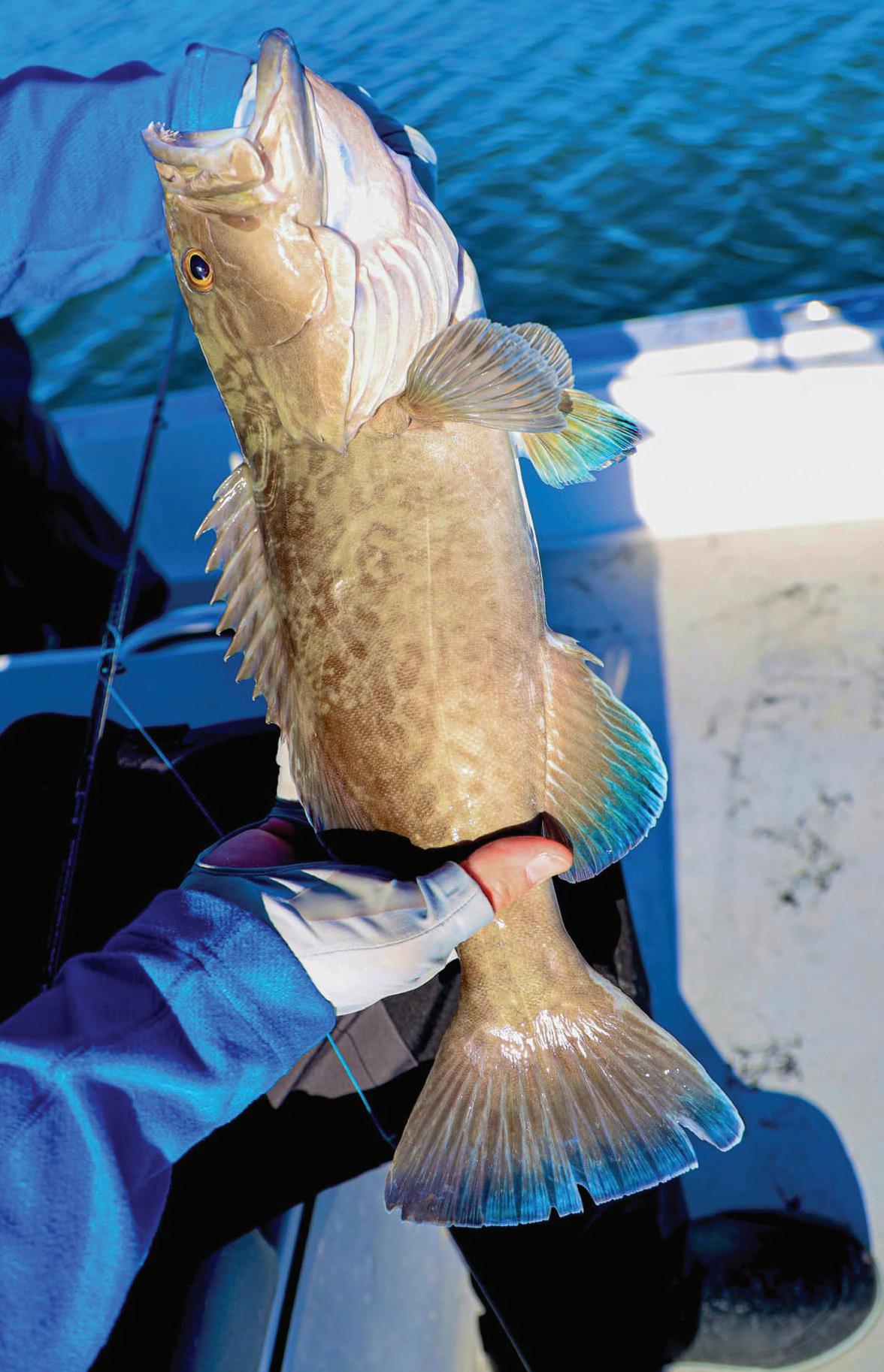

Lurking amongst the structure, gag grouper camou age themselves into their surrounds and wait motionless for their next opportunity at a meal. Besides their stunning appearance, their violent strike once they commit to eating prey is what got me hooked. e vicious thump when they
Whichever tactic you choose, make sure to beef up on your leader line. You’ll be shing pilings, jagged rocks or oyster beds with a hole they are bedded down in. Once you hook up, 9 times out of 10 you’ll notice your shing line moving back towards where you hooked them. Using the proper shing gear is key to keeping them away


Down here on the Lower Laguna Madre, we have several zones where we can sh for gag grouper. e SPI and Boca Chica je ies hold all types of aquatic wildlife as well as the deepwater structures of the ship channel. e RGV Reef is only 13 miles northeast of the South Padre Island je ies and is a popular nearshore option for anglers to catch state water snapper, grouper and more. At 1,650 acres, the RGV Reef is Texas’ largest reef and one of the largest arti cial reefs in the world. Professional crews continue to add to the reef by deploying concrete railroad ties and most recently a retired tugboat. e organization, Friends of RGV Reef, helps restore and enhance underwater environments, creates new homes for sh populations and supports biodiversity in the Gulf.
Scan to Hear Audio Version

As Texas anglers, we are blessed to have a shery that o ers sherman plenty of species to chase a er. Enjoy your pursuit of checking this intriguing, unique and beautiful species o your shing bucket list this summer. And please remember friends, to keep only what you need, not everything you catch.
Email Kelly Groce at contactus@fishgame.com




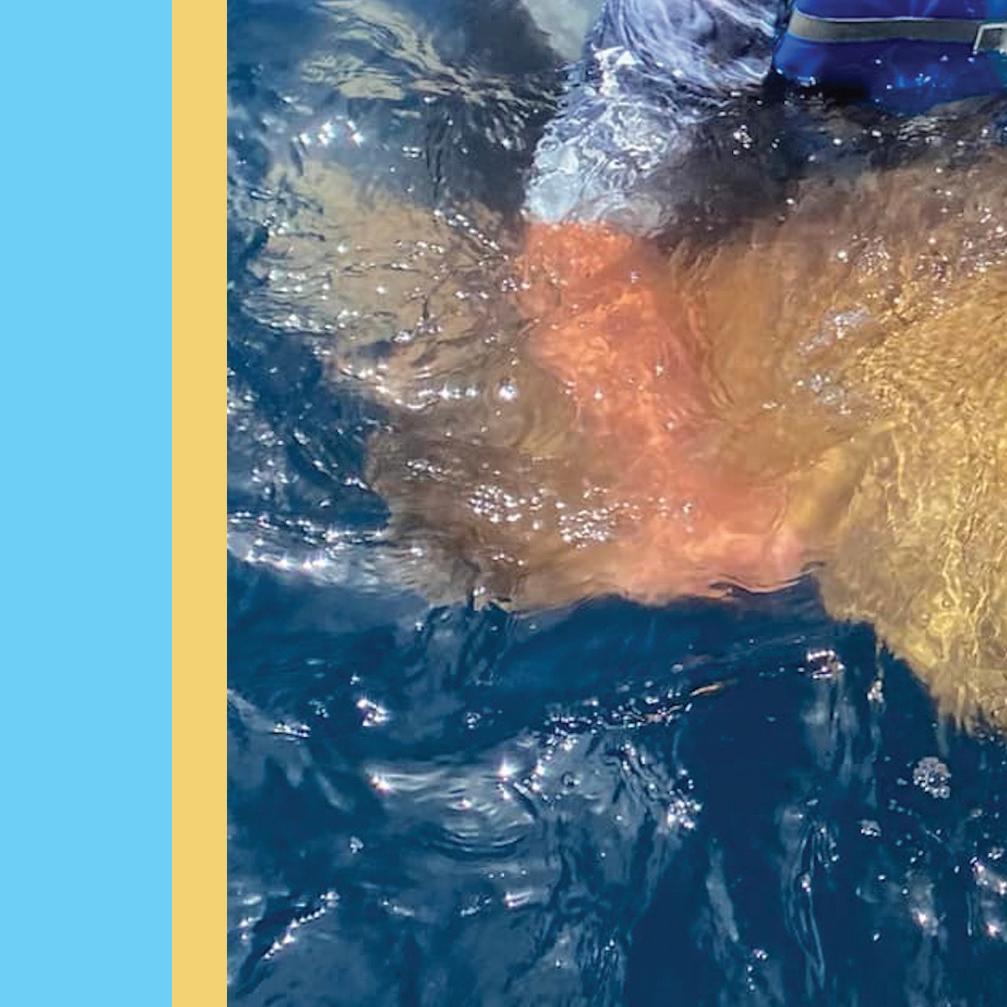
IRECENTLY EMBARKED ON AN ADVENture that was nothing short of epic. My journey took me o the Atlantic Coast of Florida, where I joined TF&G Hot Spots Focus writer and Spot Stalker Guide Service owner Captain Derek York along with Michael Sherer of Fishing’s Future and Chris Geib. Our mission was clear: to catch the elusive Goliath Grouper, a sh that had long been on Derek’s bucket list and had quickly captured my imagination. Coming from the Midwest, the ocean was as mysterious to me as the moon. Yet, the call of the sea was irresistible. I ew down to Orlando, met up with Derek, Michael, and Chris, and we set sail at the crack of dawn, our spirits high with anticipation. e open ocean awaited us, and with it, the promise of an encounter with one of its most formidable inhabitants.
Our warm-up session involved tangling with amberjack and red snapper. ese sh, though impressive, were merely the opening act to the main event. I couldn’t help but marvel at the di erence between these ocean giants and the freshwater sh I was accustomed to. e amberjack, in particular, tested our me le, proving to be a formidable adversary that made even the hardiest sh I’d previously caught seem tame by comparison. e pursuit of the Goliath Grouper was fraught with










to protrude unnaturally. is highlighted the importance of conservation and the need for responsible shing practices to ensure the survival of these magni cent creatures upon release.
A er achieving Derek’s dream of catching a Goliath Grouper, our day took an unexpected turn as a storm rolled in, forcing us to head back to shore. e adventure concluded with one of the most memorable catch and cooks I’ve ever had the pleasure of participating in.
Re ecting on this experience, I realized how di erent ocean shing is from what I’m used to back home. e sh in the ocean
challenges. With just one bait sh to our name, every a empt had to count. Derek shared his lifelong fascination with these behemoths, and I could see the re in his eyes as he spoke of his dream to catch one. Our strategy was bold and required us to race away from shipwrecks at high speed to prevent the Grouper from entangling itself and breaking free.
is adventure was more than just a shing trip; it was a profound learning experience. We delved into the issue of barotrauma, a condition that a ects Goliath Groupers due to rapid changes in water pressure, causing their stomachs



ght harder and longer, demanding respect and admiration. is adventure has le me with a deep desire to return to the sea, to once again challenge its inhabitants, and to continue advocating for their conservation. For now, though, I’ll return to the familiar waters of my Midwest home, forever changed by my encounter with the giants of the sea.




HEN IT COMES TO celebrating Mother’s Day and Father’s Day, Texas Fish & Game readers know that the best gi s aren’t wrapped in bows.
Instead, they are found in the great outdoors. And while everyone knows about bass shing, whitetailed deer hunting, and the classic Gulf Coast saltwater adventure, there are plenty of outdoor experiences in Texas that many have yet to discover. is year, surprise your mom or dad with a gi that revolves around the hidden natural wonders of Texas. Here are some truly unique species that many outdoor enthusiasts don’t even realize exist in the Lone Star State.


Snook are typically associated with Florida’s warm waters, but did you know Texas has its own population of these prized gamesh? Found primarily in the lower Laguna Madre and around South Padre Island, snook o er some of the most exciting light-tackle shing in the state. eir acrobatic jumps, line-burning runs, and aggressive strikes make them a thrill to catch.























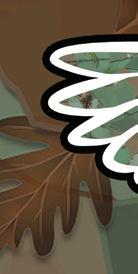


















Texas


When people think of Texas big game, deer and hogs come to mind, but South

Texas is home to an exotic giant—the nilgai antelope. Originally from India, these massive, blue-hued antelope roam free on some of the vast ranches of the coastal
plains. eir sharp eyesight and speed make them a challenge to hunt, and their lean, avorful meat is a trophy in itself.
Axis deer were introduced to Texas in the 1930s, and thanks to their ability to thrive in the wild, they now have free-ranging populations in the Hill Country and parts of South Texas. Known for their striking spo ed coats and exceptional venison (o en ranked be er than beef in avor and tenderness), axis deer o er an exciting alternative to traditional whitetail hunting.
Bass shing is a Texas pastime, but did you know the Lone Star State has its very own native species of bass? e Guadalupe bass, Texas’ state sh, is found only in clear, fast- owing Hill Country

rivers. Smaller than a largemouth but full of fight, catching one is a true badge of honor for any angler.
While Texas is famous for redfish, speckled trout, and king mackerel, most people don’t expect to see great white sharks off the coast. However, in 2024, reports surfaced of great whites showing up in Texas waters, drawn by warming currents and an abundance of food. Seeing one is rare, and they are protected from harvest but the idea of sharing the water with these apex predators adds a whole new thrill to offshore fishing.
Everyone in Texas knows about Rio Grande turkeys, but did you know the Eastern wild turkey is making a comeback in East Texas? Once nearly wiped out, conservation efforts have successfully restored these birds to the Pineywoods region. They’re larger and warier than their Rio cousins, making for an exciting and challenging hunt.
Chachalacas may sound like something out of a rainforest documentary, but these loud, chicken-sized game birds live in the Rio Grande Valley. Often heard before they’re seen, chachalacas make for an interesting and underappreciated upland hunting experience.
Many people associate pheasant hunting with the Midwest, but Texas actually has wild pheasant populations in the Panhandle and parts of North Texas. These colorful, fast-flying birds provide excellent upland hunting opportunities that rival those of the Dakotas.
Believe it or not, elk still roam free in
Texas. Most people assume these majestic animals are found only in Colorado or New Mexico, but free-ranging herds can be found in the Trans-Pecos region. The mountains of West Texas provide rugged terrain and an unforgettable backdrop for an elk hunt.
This year, instead of the usual coffee mug or gift card, consider giving your
parents the gift of adventure. Whether it’s hunting free-ranging exotics, fishing for an elusive Texas species, or embarking on a rare wildlife encounter, there’s no better way to celebrate Mother’s Day and Father’s Day than by experiencing the unique biodiversity of Texas’ great outdoors.













BY
Texas Game Wardens resulted in approximately 1,200 pending charges and 22 suspects from across the state involved in the deer breeding industry and black-market wildlife trade.
e suspects and charges are associated with three deer breeding facilities, ten release sites, one deer management pen and three illegal facilities not registered in the Texas Wildlife Information Management Services (TWIMS) database, meaning they were operating or receiving deer in violation of registration requirements and disease monitoring protocols.
“ e hard work and commitment of our Texas Game Wardens to uncover these violations cannot be overstated,” said Texas Parks and Wildlife Department (TPWD)
Executive Director David Yoskowitz.
TPWD has referred the cases to prosecutors’ o ces in 11 Texas counties.
e cases stem from a prior investigation involving the illegal smuggling of captive white-tailed deer, ultimately leading wardens to uncover this much larger network of alleged o enders a er the arrest and conviction of two individuals that occurred in Montgomery County.
e investigation uncovered approximately 500 Class C charges, 700 Class B charges, 22 Class A charges and multiple state jail felony charges. Due to the ongoing nature of this case, the nal number of charges led may vary.
“I am incredibly proud of the dedication and diligence Texas Game Wardens devoted to this case,” said Col. Ronald VanderRoest,






TPWD law enforcement director.
TPWD has established science-based regulations and procedures to both manage deer breeding in Texas and prevent major disease outbreak, all with the goal of ensuring the long-term sustainability of native and captive deer in Texas.
Chronic Wasting Disease (CWD) is a fatal neurological disease and can devastate deer populations by silently spreading through direct animal contact and contaminated environments. Without close monitoring, illegal movement of captive deer increases the risk of introducing CWD to areas it is not known to exist, potentially leading to widespread outbreaks which will impact more than just the health of Texas deer.
Yoskowitz also noted that with many rural Texans depending on hunting as their full or supplemental income, a large-scale outbreak of CWD could pose a signi cant threat to whitetailed deer hunting, which has a $9.6 billion annual economic contribution and could irreversibly alter Texas’ rich outdoor heritage.

By circumventing requirements, disregarding regulations and falsifying o cial records, the suspects in this case intentionally placed the state’s entire deer population at risk, explained VanderRoest.
“ ese individuals and ranches operated with impunity, repeatedly violating established laws designed to protect Texas’ natural resources and safeguard the state’s wildlife against disease transmission,” VanderRoest said.
TPWD remains commi ed to enforcing these laws and will hold violators accountable. Texas Game Wardens will continue to pursue those who disregard regulations and illegally exploit Texas’ natural resources, pu ing both captive and native populations at risk.


ANGLER CLAYTON BRADDOCK OF Argyle reeled in Lake Tawakoni’s grand entry into the Toyota ShareLunker program in March, catching the waterbody’s rst Legacy Class sh.
e lake became the 79th Texas public shery to produce one of these massive largemouth bass, and Braddock’s 13.30pound ShareLunker 676 bumped the overall total to seven during the 2025 Toyota ShareLunker collection season
Braddock competes in Team Trail Outdoors shing tournaments and has one scheduled at Lake Tawakoni in a couple of weeks. He headed out that Sunday morning to practice and due to some rain, didn’t get on the water until roughly 8:30 a.m.
ey shed a couple of spots and came up empty, so they decided to go sh on some rocky areas.
“I was throwing a medium diver crank-





bait, and she bit in about six feet of water,” said Braddock. “All she did was headshake and it almost felt like I had a ve-pound channel cat sh on the line. I nally got her up closer to the surface and saw her side and knew she was di erent. I told my friend who I was shing with to grab the net because I knew it was a giant. We got her in the net, celebrated, put her in the
live well, gave her some time and decided to weigh her. When we saw the weight, we knew at that point our plans had changed.” e catch was a personal best for Braddock and broke his previous personal best of nine and a quarter pounds, which he set last year. —TF&G Staff Report








Reported by CAPT. EDDIE HERNANDEZ
WE ARE RIGHT SMACK IN the middle of the late spring and early summer months on Texas’ upper coast. Just like that, we are now blessed with vast amounts of pre y, warm water and an endless array of shing pa erns, techniques, destinations and opportunities.
Just about every inshore species are beginning to bite as the water consistently continues to warm. Deciding where to go is o en the hardest part since the bite should be on from the I-10 bridge to the Gulf of Mexico! If that decision brings you to the lake itself, nding trout, reds and ounder shouldn’t be that di cult. Several di erent paths will lead you to the sh. Here on Sabine Lake the number of bayous you’ll encounter on the eastern side between East pass and Blue








Buck Point should keep things interesting. Bouncing so plastics o the bo om or dragging curly tail grubs, live mud minnows or nger mullet in one to six feet of water should work well. Fishing the mouths of these bayous can be killer on trout, reds and ounder as the warming water and bait sh move in and out with the tides.
Another option is to run the open bay in search of schooling trout and reds. Whether gulls and terns are giving them away or you just nd shrimp skipping along the surface, and sh blowing up the calm water, this is an action-packed way to spend the day. Topwaters, spoons, rattletraps, plastics and just about anything else you can reach the sh with will get hit. e action is fast and furious while it lasts. Fish the area a li le longer a er they go down, then continue to run the lake slowly, watching the surface carefully for any sign of activity. A good pair of binoculars will
de nitely come in handy here. Oyster reefs and clam beds can also be major players, especially as the water temperatures begin to rise. e month of May is prime time to concentrate your e orts on areas such as mid-lake clam shell pads and the giant oyster super structure that blankets just about the entire south end of Sabine Lake. Sand eels and other bait sh are a racted to these reefs and use them for nutrition and protection. Naturally, the abundance of bait that these reefs hold will a ract and hold the big, mean predators as well. Before the water temperature really heats up, we like to bounce big, long so plastics over the shell. e longer baits emulate the size and shape of the sand eels, which are typically some of the rst to show up on the big reefs.

CONTACT CAPT. HERNANDEZ: Email: GHGS.Eddie@gmail.com Online: GoldenHookGuide.com
Reported by CAPT. DEREK YORK
WARM WEATHER, LOTS of people out on the water and great shing means it’s almost summertime here on Galveston Bay. I am ready for summer to get here, and May and June are always busy months for me ge ing people out shing, especially with schools ge ing out for the summer and longer, warmer days ahead. Fishing can be fantastic at this time of year both inshore and o shore!
Right now, in the bay we are catching
lots of speckled trout and reds over shell and around marsh drains. I have been shing mostly in the lower half of the bay lately from lower East Bay to around the middle of West Bay. e Galveston causeway can also be a great place to catch sh this time of year.

Popping corks with shrimp and so plastics on a jig head are usually the way to go. It is also a great idea to start the morning throwing some topwaters and experience the excitement of seeing those aggressive strikes on the surface.
Scan to Hear Audio Version

Je ies are also a good option right now and provide plenty of opportunity to catch sheepshead, black drum, red drum, and speckled trout. You can catch some nice, speckled trout this time of the year out at the je ies on free-lined shrimp. I always have multiple setups to sh out at the rocks, including a popping cork and shrimp, bo om knocker rigs and one or two free-line setups for throwing shrimp up close to the rocks. And it still never hurts to keep one or two big rods out the back of the boat for something big! Bull reds, big black drum and sharks are always looking for a good meal this time of year.
And when the weather is right, I am running out in state waters looking for cobia around any of the close in rigs and anything I nd oating on the surface. We usually have some Sargassum showing up this time of year. ese sh are fun to see and catch and can provide a great ght. I keep a couple of big spinning reel setups rigged with a 60-80# uorocarbon leader and circle hook to pitch a live bait to these sh. ey will gladly eat a big shrimp or croaker most days. And if you are lucky enough to get one hooked up and to the boat, be ready when bringing them onboard. I
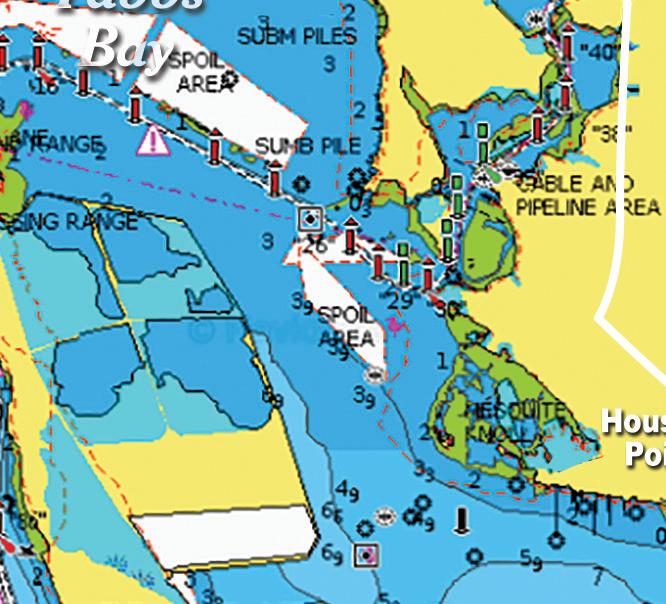





THE AREA WHERE THE SAN JACINTO RIVER JOINS GALVESTON BAY IS RICH IN both Texas history and saltwater angling. Trout and redfish can be caught in the shadow of the 567-foot-tall San Jacinto Monument that commemorates the decisive victory in the Texas Revolution. Selected HOTSPOTS are shown in the table below, and on the map.





















or croaker up and to be ready

try to get them straight into the cooler if possible. Just think about how wild those bulls are in the pens at the Houston Rodeo are when trying to get the rider o ! A “green” cobia on the deck can cause some serious damage to you and your boat if not prepared.
Whether you are bank shing, wade shing, on a boat or out with one of the many great guides on Galveston Bay, I know you are going to have a great time on the water. Just remember to stay safe and take a kid shing!
CONTACT CAPT. YORK:
Email: SpotStalkerFishing@sbcglobal.com
Online: SpotStalkerGuideService.com
Reported by CAPT. MARK TALASEK
IT’S A COMMON SIGHT NOWAdays to see a family si ing at a restaurant with everyone glued to their phones instead of enjoying each other’s company. I’m guilty myself sometimes. Kids nowadays are entrenched in the technology world. Gaming and smartphones are the only entertainment they know. Very few kids get to experience God’s great outdoors. Technology has become a built in babysi er.
Remember when we got our rst push bu on rod and reel? I would tie a weight on the end and play cast all day long before the days of video gaming. at is what entertained me as a kid. Trying to cast into buckets set up in the yard. Practicing until we are ready for the real thing. Get a pound of dead shrimp. Put one on
















ous and respectful of the outdoors. Summertime is upon us once again. Shorelines are holding sh early for waders throwing arti cials. Midbay reefs are holding trout with dri ers throwing live shrimp. Flounder gigging is great at night.




a circle hook with a weight and cast it o the pier. Dangling your feet in the water waiting for a hardhead to bite. e moment something tugged on the other end of your line it was on! It was fun even though most of the time there was a trash sh on the other end. ere’s something about never knowing what you are going to catch.
I was lucky enough to have a father who was a shing guide. I jumped in the boat every opportunity to go shing. Some kids don’t have that. If you get a chance, pass that knowledge on to them youngsters. Something as simple as tying a knot. We take it for granted but someone else might not know. We all have to learn from someone.
I learned something from every shing trip.

Countless times on the water, some good some bad. Each trip was an experience. Where to go at certain times, where not to go. What bait to use. Hook size, line type, rod and reel, weather, moon, tide etc. ere are so many factors to catch sh. Someone has to teach us.
Basic navigation of a boat is something we take for granted. Pu ing the plugs in, loading/unloading, safety equipment, docking, submerged objects etc. I unloaded my boat for the morning trip and was waiting for my customers when someone came up and said that my boat was si ing low in the water. Sure enough I forgot to put the plugs in. Back on the trailer to let all the water out. Lol. Even the pros get complacent.
It’s my job to teach people how to sh. Take the time to share your knowledge of shing with others. Also how to be courte-
CONTACT CAPT. TALASEK: Email: MarkTalasek@sbcglobal.com Online: TalasekGuideService.com
LOCATION: Christmas/Bastrop Bay
HOTSPOT: Rattlesnake Point
GPS: N 29 1.578, W 95 12.793 (29.0263, -95.2132)
Species: Speckled Trout
BEST BAITS: Soft plastics, topwaters
TIPS: Best plastic choices are Norton Sand Eels, Trout Killers; for topwaters, go with a Top Dog.
LOCATION: Galveston Bay
HOTSPOT: Pasadena Reef
GPS: N 29 28.2, W 94 49.22 (29.4700 -94.8203)
Species: Speckled Trout
BEST BAITS: Soft plastics
BEST BAITS: Slammin Chicken Paddle Tail Scan to Hear Audio Version
TIPS: Drift slicks early with red soft plastics, slow retrieve off bottom; morning through afternoon.
LOCATION: Galveston Bay
HOTSPOT: Redfish Island South GPS: N 29 30.22, W 94 52.547 (29.5037 -94.8758)
Species: Redfish
BEST BAITS: Croaker, soft plastics
TIPS: Live croakers, Kelly Wiggler soft plastics work best here. Watch for ship wakes; early morning is best.
LOCATION: Galveston East Bay
HOTSPOT: Pig Pen
GPS: N 29 25.176, W 94 44.116 (29.4196 -94.7353)
Species: Redfish
BEST BAITS: 1/4-1/2 oz. gold spoons, topwaters
TIPS: Work grass, look for bait activity; dawn through morning.
LOCATION: Galveston Trinity Bay
HOTSPOT: Gas Wells
GPS: N 29 42.984, W 94 43.14 (29.7164 -94.7190)
Species: Speckled Trout
TIPS: Fish with moving tide; dawn-afternoon.
LOCATION: Galveston Trinity Bay
HOTSPOT: Pasadena Reef 1
GPS: N 29 28.114, W 94 49.192 (29.4686 -94.8199)
Species: Speckled Trout
BEST BAITS: Soft plastic, 3/8 jig head TIPS: Be careful of ship wakes; fish early, late.
LOCATION: Galveston West Bay
HOTSPOT: Chocolate Bay Shoreline
GPS: N 29 10.392, W 95 9.005 (29.1732 -95.1501)
Species: Speckled Trout
BEST BAITS: Soft plastics, live bait
TIPS: Areas with small baitfish normally have big trout; fishing is good here all day.
LOCATION: Galveston West Bay
HOTSPOT: North Shoreline
GPS: N 29 14.315, W 95 0.677 (29.2386 -95.0113)
Species: Speckled Trout
BEST BAITS: Soft plastics, live bait
TIPS: Work the grass shoreline; dawn through morning, afternoon through dusk.
LOCATION: Matagorda East Bay
HOTSPOT: Boggy Cut
GPS: N 28 44.043, W 95 49.658 (28.7341 -95.8276)
Species: Flounder
BEST BAITS: Mud minnows, finger mullet
TIPS: Best with moving tides; midday.
LOCATION: Matagorda East Bay
HOTSPOT: St. Mary’s Bayou
GPS: N 28 39.786, W 95 57.432 (28.6631, -95.9572)
Species: Speckled Trout
BEST BAITS: Mirrolure 52
TIPS: Fish the scattered and solid shell on the bottom; dawn-morning, dusk-night.
LOCATION: Matagorda West Bay
HOTSPOT: Mad Island Reef
GPS: N 28 37.211, W 96 5.783 (28.6202, -96.0964)
Species: Speckled Trout
BEST BAITS: Shrimp, croaker
TIPS: Freeline shrimp or croaker. Anchor near the reef and cast the area; dawn-morning, dusk.
LOCATION: Matagorda West Bay
HOTSPOT: Tres Palacios Bay
GPS: N 28 42.452, W 96 12.346 (28.7075, -96.2058)
Species: Speckled Trout
BEST BAITS: Topwaters, soft plastics
TIPS: Wade the shoreline and hit guts and sand pockets; dawn-morning, afternoon.
LOCATION: Sabine Lake
HOTSPOT: Flats
GPS: N 29 56.404, W 93 50.919 (29.9401 -93.8487)
Species: Speckled Trout
BEST BAITS: Slow sinkers
TIPS: Drift the flat, look for sand holes, nervous mullet, grass.
LOCATION: Sabine Lake
HOTSPOT: Stewt’s Island
GPS: N 29 58.159, W 93 50.782 (29.9693 -93.8464)
Species: Redfish
BEST BAITS: Mullet, soft plastics
TIPS: Fish Stanley Wedgetails, jig-tipped shrimp, finger mullet.


Reported by CAPT. KIM GOULDEN
THE SUN HAD BARELY
touched the horizon when the rst blowup came. At rst, it was a subtle slurp with the occasional eeing bait, almost teasing with sca ered showings. But then, the topwater assaults became more numerous and ultimately concentrated. Before long, we were smack dab in the middle of a full-blown bull red sh topwater feed.


is was the catch of a lifetime - three times over that morning.
CONTACT CAPT. GOULDEN: Email: KimGouldenFishing@gmail.com Online: PortOConnorFishingTrip.com



IT. WAS. ON.
is young angler’s hands were already steady on the rod, his body instinctively leaning forward, eyes locked on the water’s surface. e boat rocked slightly as the current ripped by with a fresh in ux of gulf bait. An o er was presented and the line pulled tight. He’d shed long enough to know it was something big.
His heart skipped, then quickened, as the sh made powerful runs deep. e rod bent almost to the breaking point, and the ght was on.
e fast current carried us out of the feeding frenzy while the ght was tough with wild bursts of energy. His ngers tightened around the grip, his knuckles white. He could hear the drag screaming as the big sh made a hard run a er run. A rush of adrenaline coursed through him, the kind that only a ba le like this could bring.
For a moment, the world felt distant— just him, the rod, and the unseen sh. Time slowed, and the quiet hum of nature seemed to fade. Only the struggle ma ered now.
Another powerful yank. e line cut through the water like a knife, and he braced himself. e sh was fast, but so was he. He could feel the muscles in his arms tightening, each tug a reminder of what was at stake.
en, with a sudden surge, the sh broke the surface, its copper scales catching the sun in a ash of brilliance. It was massive—bigger than anything he’d caught out here before. Its body twisted and thrashed, sending droplets ying in every direction. His breath caught in his throat. is was it. e kind of catch people talked about for years.
With a last, desperate e ort, he managed the last few cranks, arms straining with the e ort. e big red sh fought one nal time, then, came in for landing.
Reported by CAPT. RICHARD THOMPSON
WHAT DOES BAFFIN BAY mean to you? What about those incredible memories made there? Why is it so important to us here at R&K? Before we answer, do you actually know the history of Ba n?





e young angler’s heart pounded, his hands trembling as the sh breached the water’s surface once more, its broad body gleaming in the morning light. en, with one smooth motion, the big catch was scooped up into the boat. e moment hung in the air, suspended in time. He could hardly believe it. e sh thrashed in the bo om of the boat, its enormous, golden body, a testament to the ba le they’d just shared.
He exhaled sharply, the adrenaline slowly fading. His pulse was still racing, but the rush of victory se led over him like a warm wave.
Ba n Bay, located at 27.2670N, 97.5821W on the Texas Gulf Coast, is known for its rich marine life and unique limestone formations. Ba n Bay is an inlet of the larger Laguna Madre, comprised of three branches – Alazan Bay, Cayo del Grullo, and Laguna Salada. Ba n is the only bay in Texas with unique rock formations formed by ancient Serpulid Rock Worms. ese reefs a ract anglers seeking trophy speckled trout and red sh. Today, it is becoming a very popular spot for shing, birding, and enjoying South Texas’s untouched and still wild ecosystems. Ba n Bay’s popularity has surged, especially for winter and early Spring “Trophy Trout.” My social media is ooded with impressive catches this Winter and Spring. Wade shing is the preferred method here as it forces anglers to slow down and sh each area thoroughly, resulting in more hookups. I have spoken to all the guides down here


and we are all seeing and reaping the reward of catching these giant Trout as the TPWD regulation is paying off in dividends. The bait fish are becoming thick, and May/June is kicking off for the predator prey game we all love to be apart of during this time of year.
Here comes the good part. How are we and everyone else catching these beautiful specimens? We recommend a few lures we have used and have been extremely successful at landing these monsters. We typically throw a topwater first thing in the morning if the conditions are favorable. Heddon One Knocker Spook, pink and chrome, is my ultimate favorite hands down. Transitioning to Coastal Brew Bait, dart bait 6”, are our preferred and we use all the colors depending on the water clarity and we combine that with a 1/8oz or 1/16oz Salty Head lead head if we are fishing more shallow. Another dart bait that has a lot different action is the Down South Big Smooth which the trout can’t resist either. Last but not least, MirrOlure in XL and the original multi colors as well. These months really kick off croaker season so that is a great method too if you know what you are doing.
Back to the beginning when I said Baffin Bay means so much to us. We just created an apparel line called Baffin Bay Clothing Co., made here in America and carefully designed to keep anglers physical health a priority, as the material keeps them cool in the unforgiving South Texas elements. Also, we would love to share our new Laguna Shores Lodge, where our mission is to provide unforgettable coastal experiences through exceptional service, personalized hospitality, and a deep connection to the natural beauty of Laguna Madre.
Whether hosting anglers, adventurers, families, or business professionals, we strive to create a welcoming retreat where memories are made, traditions are celebrated, and guests feel truly at home. We can’t wait to meet you—we will hook you up!


Reported by CAPT. JARED McCULLOCH


IF YOU HAVEN’T BEEN ABLE TO get out and wet a line until now, I don’t know your pain, but help is on the way. It’s late spring / early summer and it feels just like hanging out with an old friend. All the spots you remember as being good are almost guaranteed to be good. We have to wake up early to make sure the bait stand has enough croaker and shad but it’s always worth it somehow. Keep an eye out for mixed shell on bo om or old structure for trout to push their stomachs on. Even hard sand can hold some healthy trout, push up tight and nd some reds nearby as well. Don’t overlook keeping a fast-sinking cast net in the boat. If you run by a fresh group of shad, turn around and get some fresh shad. If you have more of a round livewell try to keep a couple alive to use. A live shad could reignite a dead bite. ere are always windy days down here and this stretch is no di erent. Don’t be afraid to get in the middle of the ats and pothole some gorgeous trout. You’ll be glad you didn’t take the rough ride across and still have plenty of success. By June, as the trout bite heats up, it always feels like the red sh start to disappear. ey technically are those white igloos who have a way with them! Push o the islands and work the next













BEST BAITS: Live croaker
TIPS: Size of the croaker is not that important unless they aren’t smaller than a silver dollar.
LOCATION: Copano Bay
HOTSPOT: 40-Acre Reef
GPS: N 28 4.543, W 97 11.209 (28.0757 -97.1868)




SPECIES: Speckled Trout



set of potholes out, or further out, nding deeper structure that people haven’t been on, can hold a nice bounty of reds seeking refuge from the props.
For the wading crew, I rarely ever see it anymore, but the Fulton shoreline should be looked at from google maps. It feels too simple but all the grass, old shell, old rocks, old piers, and hard sand; a sh would have to be against something there! I like tans with silver or gold specks, DSL lures so even when there is a bunch of smaller trout you have to work through, you still have a lure on your hook.
Good luck out there and slow the boat down, no telling how many times just cruising barely on plain has something caught my eye, from shad being chased, to mullet ipping, to mud boils, dolphins pushing in groups, color changes in water, a li le eddy. It could be your next honey hole!

CONTACT CAPT. McCULLOCH:
Email: FirstLightTexas@gmail.com
Phone: (210) 478-6519
LOCATION: Aransas Bay
HOTSPOT: Traylor Island
GPS: N 27 56.6849, W 97 4.4609 (27.9448 -97.0744)
SPECIES: Speckled trout
BEST BAITS: Jigs
TIPS: Fish a 1/6-1/4 oz. jig, drift if the wind permits; dawn through morning, dusk.
LOCATION: Copano Bay
HOTSPOT: Lap Reef
GPS: N 28 8.014, W 97 3.022 (28.1336 -97.0504)
SPECIES: Speckled Trout
BEST BAITS: Croaker
TIPS: Anchor, throw to the reef’s top, fish a medium retrieve; dawn through morning, dusk.
LOCATION: Espirito Santo Bay
HOTSPOT: City Slicker Flats
GPS: N 28 24.283, W 96 24.148 (28.4047 -96.4025)
SPECIES: Speckled Trout
BEST BAITS: Live croaker, plastics
TIPS: Wade close to drop-off, cast to sand pockets and grass; dawn-morning, dusk-night.
LOCATION: Port Lavaca
HOTSPOT: Cadual Reef
GPS: N 28 38.107, W 96 19.594 (28.6351 -96.3266)
SPECIES: Speckled Trout
BEST BAITS: DOA Soft Plastics
TIPS: Look for structure…reefs out in the middle of the bay, spoil banks.
LOCATION: Redfish Bay
HOTSPOT: Dagger Islands
GPS: N 27 50.1019, W 97 10.2659 (27.8350 -97.1711)
SPECIES: Speckled trout
BEST BAITS: Live croaker
TIPS: Pop the croaker a little bit with rod tip every 30-40 seconds. Do it with your wrist, not your arm.
LOCATION: Rockport
HOTSPOT: Bay Oil Wells and Pads
GPS: N 28 2.742, W 96 57.8339 (28.0457 -96.9639)
SPECIES: Speckled Trout
BEST BAITS: Corkies or Soft Plastics
TIPS: A Berkley Gulp in a pearl color also works great in the clearer water.

TPWD trout regulations appear to be working, as more midcoast anglers are catching specks of a lifetime.
LOCATION: Upper Laguna Madre
HOTSPOT: Intracoastal Spoil Banks
GPS: N 27 33.6839, W 97 16.759 (27.5614 -97.2793)
SPECIES: Speckled trout
BEST BAITS: Topwaters
TIPS: Wade fishing is your best bet for spawning trout.
LOCATION: Upper Laguna Madre
HOTSPOT: King Ranch Shoreline
GPS: N 27 29.134, W 97 21.1079 (27.4856 -97.3518)
SPECIES: Speckled trout
BEST BAITS: Topwaters
TIPS: A bone/silver She Dog, with a Walk-the-Dog retrieve should produce results.
LOCATION: Upper Laguna Madre
HOTSPOT: Natural Cut
GPS: N 27 35.519, W 97 17.516 (27.5920, -97.2919)
SPECIES: Speckled Trout
BEST BAITS: Croaker
TIPS: Pop the croaker every 30-40 seconds, bounce it off the bottom. This works well for redfish too.

Reported by CAPT. GERAD MERRITT
weather and croaker season make this my favorite time of year! With the summertime season in full swing, we no longer have to ba le and base shing pa erns o of unpredictable cold fronts that drastically shi temperatures and wind direction. Although we may have the occasional Gulf storm to contend with, we are able to gather more insight on the trout routines with more consistent weather conditions.
In May, we are experimenting with several di erent techniques and locations to establish where the sh are more predominantly gathering and feeding. We are shing grass lines, drop-o s and hi ing all the rock structures we can in the time we have. For the groups that do not mind a li le bit of a run, we are occasionally heading into the Laguna Madre and Land Cut. is allows me to get a be er idea of what areas are producing and which areas are not, while still allowing customers to have a nice experience and catch sh. ere will be days in early May where we must move ten or twelve times while we try and lock them down. is movement is because we are switching over from lures and live shrimp to croaker as the bait of choice. With that said, we still will throw lures at the customer’s request. When we are lure shing, I highly suggest making it a wade shing trip. e colors and tails I suggest throwing depend greatly on the sunlight, water clarity, grass, and bo om along with water depth.

On wade shing days, I like to utilize the southernmost shoreline of Ba n Bay as it has a nice bo om. However, there are a few times I will head into the Laguna Madre and sh around certain spoil islands that I have found impressive sh on over the years.
For anglers that do not mind a challenge, I have had success on hot days wade shing the quicksand like mud Ba n o ers. ese areas have proven to hold some thick shouldered and heavier sh when the temperature gets high. However, this is a task that takes work, endurance, and strength as the suction of the mud is not for the average person.
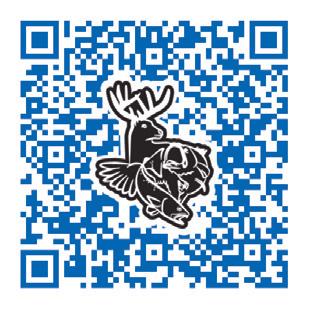
Reported by CAPT. BRIAN BARRERA
MAY BRINGS CONSISTENT warmer water temperatures and transitioning sh pa erns. Some sh will still be working in their cold weather pa erns, and some sh will be working in their hot weather pa erns, so it can be hard to target them consistently during this month. For some reason, I tend to catch sh in a li le bit murky and deeper water this time of year. Dri ing or wade shing the ats for slot red sh, and trout in deeper grass ats and channel edges with a slightly heavier jig, or a slow sinking/suspending style bait seems to be my go to. If I have clients that prefer to use bait this time of year and the sh have been in the murky water, I will use a loud popping cork with 15 to 20 inches of 30 pound uorocarbon liter tied to a 4/0 circle, hook and fresh cut ballyhoo or mullet for bait.
I use a bit of a di erent method in the clearwater this time of year, such as heavy top waters that I can launch far ways away or a heavy drop shot style rig with a circle hook and fresh cut bait. Although arti cials are always my preferred, May tends to be a month where I use cut bait the most.




Regardless of your shing method, this is a great time of year to get out on the water in Ba n Bay. With the beautiful weather it is a great time to get family and friends together and enjoy quality time while making memories you will never forget.









e extreme heat of June marks the beginning of a lot of bait, sh, migrations, and smaller bait. Fish start ooding into our at system through the inlet from the ocean and with the mullet and menhaden you can rest assured that the giant bullheads and tar-






pon will soon follow. I like to cruise up and down both the channel and beat sides of the Je y using my Humminbird Solix to locate schools of bait as well as schools of bigger sh, generally located somewhere close by. If the school’s a sh that seems to be si ing in one speci c area, I will spot lock directly on top of them, give or take 20 yards, depending on the current and drop baits or lures directly down into the schools. If the school is a sh that seems to be moving or cruising around, then I prefer to dri using anything from one to 7 ounce weights to keep baits on or near the bottom. During low light conditions and peak times of the tide you can sometimes nd these sh busting baits on the surface in which case I love to use a big so plastic or if you have time to tie one on before the frenzy stops, a big top water popper. Red sh and trout on the ats will be fully into their summertime pa erns by now, and a lot easier to target consistently. Early mornings, and late evenings tend to be the best bite this time of year.
CONTACT CAPT. BARRERA:
Email: CaptBrianBFishing@gmail.com Online: InshoreFishingSouthPadre.com
LOCATION: Arroyo City
HOTSPOT: West of Green Island
GPS: N 26 23.31, W 97 19.876 (26.3885 -97.3313)
SPECIES: Speckled trout
BEST BAITS: Croaker
TIPS: It’s all wade fishing…fishing a mixture of sandy bottom, kind of shelly bottom, and grass beds, grass pockets, soft clay bottoms.
LOCATION: Arroyo Colorado
HOTSPOT: Duncan Channel North
GPS: N 26 19.599, W 97 18.591 (26.3267 -97.3099)
SPECIES: Flounder
BEST BAITS: Live shrimp, mud minnows
TIPS: Fish middle to back with live shrimp or mud minnows; dawn through midday.














BAFFIN BAY IS THE GATWAY TO THE LOWER LAGUNA MADRE AND THE AMAZING saltwater angling opportunities that are available year-round. Selected HOTSPOTS are shown in the table below, and on the map.





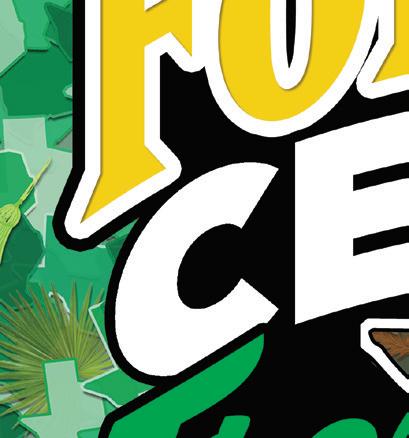


LOCATION: Lake Bob Sandlin
HOTSPOT: Twin Cove Point
GPS: N 33 3.791, W 95 2.01 (33.0632, -95.0335)
SPECIES: Crappie
BEST BAITS: Minnows, jigs
TIPS: Use a slip cork and fish near trees with live minnows, red, chartreuse jigs; dusk
LOCATION: Brandy Branch Reservoir
HOTSPOT: Hydrilla Hump #2
GPS: N 32 26.786, W 94 28.304
CONTINUED FROM PREVIOUS PAGE
LOCATION: Baffin Bay
HOTSPOT: Black Bluff Shoreline
GPS: N 27 13.972, W 97 31.112 (27.2329 -97.5185)
SPECIES: Redfish
BEST BAITS: Shrimp, topwaters
TIPS: Wade or drift the shallows along shoreline with shrimp or topwaters; dawn-midday, dusk.
LOCATION: Baffin Bay
HOTSPOT: Green 9
GPS: N 27 15.942, W 97 27.401 (27.2657 -97.4567)
SPECIES: Speckled Trout
BEST BAITS: Shrimp
TIPS: With southeast wind, drift the shoreline to Marker 9; morning through midday.




(32.446433, -94.471733)
SPECIES: Largemouth Bass
BEST BAITS: Jigs, crankbaits, flukes
TIPS: Fish the hydrilla perimeter in 10 to 20 feet of water; dawn, morning, dusk.
LOCATION: Caddo Lake
HOTSPOT: Bird Island Area
GPS: N 32 40.6206, W 94 5.0219 (32.6770, -94.0837)
SPECIES: Largemouth Bass
BEST BAITS: V&M wild thang 8.5 worm in colors of black/blue or Blue Flex. Frogs and buzzbaits in the grass and pads.
TIPS: Fish the large worms around the cypress trees in 3-5 feet of water while fishing the frogs and buzzbaits in the same areas.
LOCATION: Lake Conroe
HOTSPOT: Atkins Creek Fingers
GPS: N 30 22.434, W 95 35.815 (30.3739, -95.5969)
SPECIES: Largemouth Bass
BEST BAITS: Pig & jig, crankbaits, worms
TIPS: Fish jigs and worms around dock; morning, afternoon, dusk.
LOCATION: Lake Cooper/Jim Chapman
HOTSPOT: Dam 2
GPS: N 33 19.924 , W 95 37.942 (33.3321, -95.6324)
SPECIES: Catfish
BEST BAITS: Punch bait, shad
TIPS: Fish with Carolina-rigged punch bait or shad and work in about 6-15 feet of water. Action good all day.
LOCATION: Lake Fork
HOTSPOT: 164 Bridge
GPS: N 32 51.727, W 95 32.026















LOCATION: Lower Laguna Madre
HOTSPOT: Green Island
GPS: N 26 23.5379, W 97 19.465 (26.3923 -97.3244)
SPECIES: Speckled trout
BEST BAITS: Big topwater lures


there’s not very much wind, throw a Super Spook.
LOCATION: Lower Laguna Madre
HOTSPOT: Rattlesnake Bay
GPS: N 26 18.613, W 97 19.453 (26.3102 -97.3242)
SPECIES: Speckled trout
BEST BAITS: Big topwater lures
TIPS: Wade the point. Pink/White, or natural bait
fish colors are good choices.
LOCATION: Middle Ground
HOTSPOT: Big Oak Mott
GPS: N 26 41.965, W 97 27.791 (26.6994 -97.4632)
SPECIES: Speckled Trout
TIPS: Super Spooks, Skitter Walks, She Dogs… On a high wind, use a She Dog because it’s real loud. On a medium wind day, use the Skitter Walk. If
BEST BAITS: Topwaters, plastics
TIPS: Topwaters, plastics w Mansfield Mauler, wade up to 200 yds; dawn through midday.
LAKE CAPACITY CURRENT %
As of 4/4/2025 AC. FT. AC. FT. FULL
Addicks -n.a.- -n.a.- -n.a.-
B A Steinhagen 69,186 66,357 96%
Barker -n.a.- -n.a.- -n.a.-
Bob Sandlin 192,417 192,417 100%
Caddo 29,898 29,898 100%
Conroe 417,577 417,379 100%
Crook 9,195 9,195 100%
Cypress Springs 66,756 66,756 100%
Fork 605,061 602,412 100%
Houston 132,318 132,318 100%
Houston County 17,113 17,113 100%
Jacksonville 25,670 25,670 100%
Jim Chapman 258,723 258,723 100%
Lake O’ the Pines 241,363 241,363 100%
Livingston 1,603,504 1,603,504 100%
Monticello 34,740 30,009 86%
Murvaul 38,285 38,285 100%
Nacogdoches 39,522 39,522 100%
Palestine 367,303 367,303 100%
Pat Mayse 113,683 113,683 100%
Sam Rayburn 2,857,077 2,857,077 100%
Striker 16,878 16,198 96%
Sulphur Springs 17,747 17,747 100%
Toledo Bend 2,236,450 2,143,864 96%
Wright Patman 122,593 122,593 100%
(32.8621, -95.5338)
SPECIES: Largemouth Bass
BEST BAITS: Crankbaits
TIPS: Bomber crankbaits perform well here; solid action all day.
LOCATION: Port Mansfield
HOTSPOT: Lower West Bay
GPS: N 26 29.674, W 97 24.081 (26.4946 -97.4014)
SPECIES: Speckled Trout
BEST BAITS: Topwaters, plastics, shrimp
TIPS: Drift with topwaters, soft plastics or live shrimp; good all day.
LOCATION: South Padre Island
HOTSPOT: Long Bar
GPS: N 26 8.592, W 97 14.2249 (26.1432 -97.2371)
SPECIES: Speckled trout
BEST BAITS: Croaker
TIPS: Use free lines, or a Chatter Weight with the croaker. Give it a bit of a thump every 5-8 seconds.










SURFACE AREA: 90,000 acres
MAXIMUM DEPTH: 77 feet
IMPOUNDED: 1969
THE TRINITY IS ONE OF TEXAS’S LONgest rivers, its headwaters formed in separate forks north and west of Fort Worth and stretching across the eastern half of Texas to its mouth above
Galveston Trinity Bay. Livingston is the largest impoundment on the River, and for more than fify years has been a hotbed of fishing and water recreation. Its upper river-dominated area is especially productive for anglers. PVC fish habitat structures have been placed in the lake. (See this symbol... ...on the map).

CONTINUED FROM PREVIOUS PAGE
LOCATION: Lake Houston
HOTSPOT: Ben’s Branch
GPS: N 30 1.639, W 95 8.763 (30.0273, -95.1461)
SPECIES: White Bass
BEST BAITS: Minnows
TIPS: Fish live minnows—if you prefer artificials, spoons or jigs are your best bets.
LOCATION: Lake Livingston
HOTSPOT: Big John’s Hole
GPS: N 30 48.451, W 95 4.914 (30.8075, -95.0819)
SPECIES: Crappie
BEST BAITS: Jigs
TIPS: Tightline and fish close to stumps with black/ chartreuse 3/16 oz. jigs; dawn through night.
LOCATION: Lake Murvaul
HOTSPOT: Boat Lane Point
GPS: N 32 2.635, W 94 26.927

Reported by TF&G STAFF
LOCATION: Lake Austin
HOTSPOT: Saratoga Point
GPS: N 30 21.217, W 97 51.199 (30.3536, -97.8533)
SPECIES: Largemouth Bass
BEST BAITS: Spinnerbaits, soft plastics
TIPS: This point is productive all day.
LOCATION: Lake Belton
HOTSPOT: Main Lake










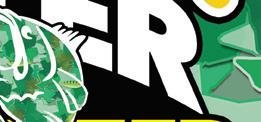

(32.0439, -94.4488)
SPECIES: Crappie
BEST BAITS: Minnows


BEST BAITS: Soft plastics
TIPS: Drag your lure over the edges. Fish move between the bends. Avoid midday.
LOCATION: Lake O the Pines
HOTSPOT: Big Cypress Ridge near Intake
GPS: N 32 49.655, W 94 39.929 (32.8276, -94.6655)

TIPS: Look for brush piles around big poles and fish live minnows when you find them; dawn, morning, dusk.
LOCATION: Lake Nacogdoches
HOTSPOT: Loco Bend #3
GPS: N 31 38.216, W 94 48.282 (31.6369, -94.8047)
SPECIES: Largemouth Bass
GPS: N 31 8.49, W 97 28.8359 (31.1415, -97.4806)
SPECIES: Largemouth Bass
BEST BAITS: Spinnerbaits, Crankbaits and Topwater Baits in natural colors
TIPS: With the water temperatures in the upper 70’s and low 80’s and daytime temperatures reaching into the 90’s, now is the time to plan your trips in the early morning or late afternoon. Bass will move into the shallow water to feed when the sun goes down and move back to deeper water when it comes back up. Look for shorelines with stickups or larger rocks in the water. The backs of coves are great starting points for this time of the year. If you have been bitten by the top water bug, this is the time of the year for some great top water action!
LOCATION: Lake Buchanan
HOTSPOT: Upper Half of Main Lake
GPS: N 30 50.4, W 98 24.4919 (30.8400, -98.4082)
SPECIES: Striped Bass and White Bass
BEST BAITS: Live shad
TIPS: White Bass and Striper fishing is excellent. Concentrate on 30 to 45 feet depths near ridges and humps. If you have a breeze, drop your anchor. If not, try drifting and fish 24 feet down.”
LOCATION: Canyon Lake
HOTSPOT: Jacobs Point
GPS: N 29 52.668, W 98 13.3259
SPECIES: Catfish
BEST BAITS: Blood bait or stink bait
TIPS: Carolina rig your bait and fish the bottom slowly. Dusk and night.
LOCATION: Lake Sam Rayburn
HOTSPOT: Indian Creek
GPS: N 31 14.505, W 94 17.664 (31.2418, -94.2944)
SPECIES: Largemouth Bass
BEST BAITS: Jigs
TIPS: Fish back end in spring, and the mouth the rest of year, jigs. Avoid midday.
LOCATION: Toledo Bend
HOTSPOT: Mills Creek
GPS: N 31 11.903, W 93 38.387
(29.8778, -98.2221)
SPECIES: Striped Bass
BEST BAITS: Jigging spoon in white color
TIPS: Fish from the point back to the swim beach casting out the spoon and try to maintain a depth of 20 to 40 feet, the Striped Bass like to school in this area this time of year.
LOCATION: Cedar Creek Lake
HOTSPOT: Mid-Lake Humps
GPS: N 32 18.288, W 96 9.636 (32.3048, -96.1606)
SPECIES: White Bass
BEST BAITS: Slabs
TIPS: Fish mid-lake humps and points with slabs hopped along the bottom in 8- to 16-feet.
LOCATION: Eagle Mountain Lake
HOTSPOT: Twin Points Humps
GPS: N 32 53.16, W 97 29.672 (32.8860, -97.4945)
SPECIES: White bass
BEST BAITS: Slabs with a fly 12 inches above
TIPS: This area has two very large humps. During the early summertime the shad congregate around these humps and the sand bass follow. I find the shad and fish on electronics and jig straight down with A slab and fly and many times you will get a double. If you like to cast, fan cast over these humps with a Mepps spinner or A tail spinner worked very slowly just off the bottom.
(31.1984, -93.6398)
SPECIES: Crappie
BEST BAITS: Minnows, jigs
TIPS: Work the creek banks and brush and vegetation with live minnows or jigs; dawn, morning, dusk.
LOCATION: Lake Wright Patman
HOTSPOT: Sherman’s Cove
GPS: N 33 16.666, W 94 10.506 (33.2778, -94.1751)
SPECIES: Catfish
BEST BAITS: Punch bait, shad
TIPS: Fish with Carolina-rigged punch bait or shad and work in about 6-15 feet of water. Good all day.
ADDITIONAL REPORTING BY:
Dave Cox: www.PalmettoGuideService.com
Richard Tatsch: www.FishDudeTX.com
LOCATION: Fayette County
HOTSPOT: Park Cove
GPS: N 29 56.544, W 96 44.9639 (29.9424, -96.7494)
SPECIES: Catfish
BEST BAITS: CJ’s punch bait
TIPS: Spawn is mostly over by now. Fish will be shallow in the timber. Put chum around the trees and fish with a slip cork.
LOCATION: Granger Lake
HOTSPOT: Main Lake Brush Piles
GPS: N 30 42.1079, W 97 21.066 (30.7018, -97.3511)
SPECIES: Crappie
BEST BAITS: 1/32 oz. Marabou jig
TIPS: May is the beginning of the best crappie fishing at Granger Lake. The fish are biting in every spot that has brush. Concentrate on open brush piles in 6-12 feet of water. The key is finding the spots with the bigger fish. Those big slab sized crappie are normally in the smaller less obvious underwater cover. A few small sticks in 6 feet of water can produce some of the largest crappie of the year. There is no need to use minnows this time of year since the crappie are so hungry after spawning.
LOCATION: Lake Joe Pool
HOTSPOT: Helicopter Pad
GPS: N 32 37.522, W 97 01.480 (32.6254, -97.0247)












SURFACE AREA: 6,684 acres
MAXIMUM DEPTH: 65 feet IMPOUNDED: 1952
LAKE GRAPVINE IS A BASS FISHING oasis in the urban sprawl of the DFW Metroplex. Flooded timber, an abun-
dance of rocky shorelines, underwater boulders and dropoffs hold largemouth, smallmouth and spotted bass. Boathouses and the water intake at the dam attract other species, including white bass, blue catfish and crappie.

SPECIES: White Bass
BEST BAITS: Jigs, RatLTraps, topwaters TIPS: Fish jigs deep in the heat of the day. Use RatLtraps for suspended fish or topwaters on surfacing fish. Avoid midday.
LOCATION: Lake Lavon
HOTSPOT: Main Lake Coves
GPS: N 33 2.2319, W 96 29.37 (33.0372, -96.4895)
SPECIES: Crappie
BEST BAITS: 1/8 & 1/16 jigs with a painted pink head in black and chartreuse and white and chartreuse colors
TIPS: Crappie are finally in shallow water. Previously, Crappie started spawning in the button willows on Lavon and the cattails on Hubbard. Depth is 1-4 ft if wading. Try 7 to 18 ft if fishing deeper. Find a firm ground with your back facing deep water and put the jig next to every stick up and the base of every willow. Also fish small rock piles. Try to find a cove protected of the south and north wind.
LOCATION: Lake LBJ
HOTSPOT: Sunrise Beach
GPS: N 30 35.625, W 98 25.07 (30.5938, -98.4178)
SPECIES: Largemouth Bass
BEST BAITS: Spinnerbaits
TIPS: Work seawalls at the canal mouth with white/ chartreuse spinnerbaits; avoid midday, afternoon.
LOCATION: Lake Lewisville
HOTSPOT: Marina and Coves
GPS: N 33 5.329, W 97 1.484 (33.0888, -97.0247)
SPECIES: Largemouth Bass
BEST BAITS: Jigs, soft plastic worms
TIPS: Chartreuse jigs, worms, Fish boat docks, back of coves with chartreuse jigs or worms; good action all day.
LOCATION: Lake Limestone
HOTSPOT: Bridge Pilings
GPS: N 31 26.375, W 96 22.746 (31.4396, -96.3791)
SPECIES: Crappie
BEST BAITS: Fish around bridge pilings and shadows
TIPS: Fish around bridge pilings and shadows; all day
LOCATION: Lake Palestine
HOTSPOT: Cobb Creek
GPS: N 32 5.4539, W 95 27.8339 (32.0909, -95.4639)
SPECIES: Largemouth Bass
BEST BAITS: BD 7 Crankbait in shad color
TIPS: Fishing south of the 155 bridge working points. Concentrate on 8 to 16 feet depths. Work the points for best results. Cobb creek has good points, and you can catch good numbers in this area. When fishing points, work the first point going into a creek and then move to the next inside the creek all the way to the back staying in the depths mentioned above. Try Carolina rigs as well.

LOCATION: Lake Ray Hubbard
HOTSPOT: The Dam
GPS: N 32
Crappie
BAITS: jigs, minnows
Drift & cast down to 8-16’ with red/chartreuse
jigs or minnows; this spot and techniques produce bites all day.
LOCATION: Lake Ray Roberts
HOTSPOT: Cates Point
GPS: N 33 22.689, W 97 3.22 (33.3782, -97.0537)
SPECIES: Largemouth, White bass
BEST BAITS: Topwaters, small swimbaits
TIPS: Post spawn fish will be plentiful in this area in May. The fish will feed on shad on most main lake points. Fish various topwaters and small swimbaits rigged on a 1/8-ounce jig head in 2-15 feet of water.
LOCATION: Richland Chambers Lake
HOTSPOT: 309 Flats
GPS: N 31 58.71, W 96 6.864 (31.9785, -96.1144)
SPECIES: White Bass and Hybrid Striper
BEST BAITS: Slabs
TIPS: Hybrid Stripers and White Bass will be feeding aggressively in the Main Lake area all month long. Silver RSR Slabs fished in 20’-30’ water off the 309 Flats will result in lots of White Bass action and the occasional LARGE Hybrid Striper. Look for Gulls to help locate the baitfish that the whites are feeding on.






LOCATION: Lake Somerville






HOTSPOT: Yegua Park Shoreline
GPS: N 30 17.76, W 96 32.784 (30.2960, -96.5464)
SPECIES: Catfish
BEST BAITS: CJ’s punch bait or shad


TIPS: Fish are still spawning. Fish shallows along the bank or structure. Use Kahle hook for Shad or a #6 treble hook for punch bait. Consider using a slip cork to prevent unwanted hookups.
LOCATION: Stillhouse Hollow Res.
HOTSPOT: Rock Island Bluffs
GPS: N 31 2.036, W 97 32.528 (31.0339, -97.5421)
SPECIES: Smallmouth Bass
BEST BAITS: Jig worms
TIPS: Fish the shoreline rocks with smoke, black jig worm; dawn through morning, dusk.
LOCATION: Lake Tawakoni
HOTSPOT: Tall Man Timber
GPS: N 32 52.633, W 95 54.615 (32.8772, -95.9103)
SPECIES: Crappie
BEST BAITS: Minnows, jigs
TIPS: Work in and around timber with live minnows or 1/8-oz. jigs; dawn, midday, dusk.
LOCATION: Lake Texana
HOTSPOT: Tree
GPS: N 29 1.981, W 96 33.929 (29.0330, -96.5655)
SPECIES: White Bass
BEST BAITS: Crankbaits
TIPS: Fish Rat-L-Traps, shallow crankbaits; good spot all day.
LOCATION: Lake Texoma
HOTSPOT: Platter Flats
GPS: N 33 55.024, W 96 33.956 (33.9171, -96.5659)


CONTINUED FROM PREVIOUS PAGE
SPECIES: Striped Bass
BEST BAITS: Topwaters, Sassy Shad
TIPS: Fish topwaters early, Sassy Shad jigs from 10-25’ later; morning through afternoon.
LOCATION: Lake Waco
HOTSPOT: Twin Bridges Point
GPS: N 31 31.92, W 97 14.135 (31.5320, -97.2356)
SPECIES: Largemouth Bass
BEST BAITS: Crankbaits
TIPS: Work shallow cranks, up, down & around the point; late afternoon.
LOCATION: Lake Whitney
HOTSPOT: Whitney Hump
GPS: N 31 54.612, W 97 20.754

Reported by TJ RANFT
CONTACT TJ RANFT:
Email: TJRanft17@gmail.com
Online: RanftGuideService.com
LOCATION: Lake Alan Henry
HOTSPOT: Coves passed Gobbler Creek
GPS: N 33 2.195, W 101 6.359 (33.0366, -101.1060)
SPECIES: Largemouth Bass
BEST BAITS: Crankbaits, worms
TIPS: Fish Senkos or Texas rigged soft plastic worms; early morning, late evening












(31.9102, -97.3459)
SPECIES: Striped Bass


your graph along these edges and humps and if your screen lights up with big balls of bait, the stripers aren’t far behind.

BEST BAITS: Live threadfin shad
TIPS: After coming off the spawn, stripers are gorging and making for some awesome action. Live bait (threadfin shad) works best. Rigging up on a Carolina rig and fishing straight down around 18’ just off ledges and edges at Whitney hump and other main lake points and humps is the key. Watch
LOCATION: Lake Arrowhead
HOTSPOT: Shoshone Park
GPS: N 33 40.562, W 98 26.702 (33.6760, -98.4450)
SPECIES: Catfish
BEST BAITS: Shad, nightcrawlers
TIPS: Fish after a rain with live shad or nightcrawlers; productive all day.
LOCATION: Lake Cisco
HOTSPOT: Brush Pile Site 10
GPS: N 32 26.7564, W 98 59.0855 (32.4459, -98.9848)
SPECIES: Largemouth bass, Crappie
BEST BAITS: Largemouth bass
TIPS: TPWD has deployed Christmas tree brush piles in Cisco. This particular location features both a rock pile and a brush pile in the lake arm near the dam. The rocky and woody structure attract prey fish and largemouth bass to this location and should increase angler catch rates.
LOCATION: Lake Granbury
HOTSPOT: Twin Humps Near Town
GPS: N 32 26.404 W 97 46.977 (32 26.404, -97 46.977)
SPECIES: Black and White Crappie
BEST BAITS: Small minnows, small crappie jigs in blue ice or electric chicken colors.
TIPS: Fish near deeper docks and timber. Look for scattered fish around structure (bridge pilings) and try a variety of depths to get the bite. Granbury water temperatures are in the 80’s and the summer patterns are in place. The Texas heat has begun, and the
ADDITIONAL REPORTING BY:
Bill Carey: www.StriperExpress.com
Carey Thorn: whitebassfishingTexas@gmail.com
Royce Simmons: www.GoneFishin.biz
Weldon Kirk: www.FishTales-GuideService.com
Randy Routh: 817-822-5539
majority of fishing will generally be reserved for early and late. Crappie are in their summer pattern and are excellent on small minnows and jigs fished near deeper structure and deeper docks.
LOCATION: Kirby Lake
HOTSPOT: Dam
GPS: N 32 23.1205, W 99 44.0777 (32.3853, -99.7346)
SPECIES: Catfish
BEST BAITS: Live or cut carp, sunfish, punch baits
TIPS: Rig your line heavy so you can cast on the windiest of days. Fishing off the dam can yield a catch of a large fish hanging out in the deeper waters. Cut carp, shad, or sunfish on slip sinker, three-way, or slip bobber rigs work well for big blues. Live 3-5” carp or live sunfish work for flatheads. Punchbaits, cut shad, and carp also work for smaller fish.
LOCATION: Lake Possum Kingdom
HOTSPOT: The Y
GPS: N 32 51.404, W 98 28.299 (32.856733, -98.471651)
SPECIES: Striped bass
BEST BAITS: Trolling and some live bait.
TIPS: Fish will be in late spring early summer patterns with Water temps in the 70-80° range. This is somewhat of a transition phase. Early morning and late evening will be the best times. Fishing live bait will produce some fish, but the fish should be starting to hit jigs predominantly. Look in 20-40 feet of water. You should start to see a thermocline on your fish finder around 30 feet. Fish will typically not be below that. It is possible to see some schooling action early in the morning and late in the day, so keep a topwater
LAKE CAPACITY CURRENT %
As of 4/4/2025 AC. FT. AC. FT. FULL
Abilene 7,900 324 4%
Alan Henry 96,207 91,334 95%
Amistad 1,813,408 468,835 26%
Amon G Carter 19,266 19,210 100%
Arrowhead 230,359 151,925 66%
Brady Creek 28,808 9,175 32%
Bridgeport 372,183 268,313 72%
Brownwood 130,868 125,945 96%
Champion Creek 41,580 19,574 47%
Cherokee 40,094 40,094 100%
Cisco 29,003 16,479 57%
Coleman 38,075 36,673 96%
Colorado City 30,758 21,546 70%
E V Spence 517,272 81,457 16%
Elephant Butte 1,960,900 278,084 14%
Falcon 1,562,367 254,434 16%
Fort Phantom Hill 70,030 43,961 63%
Graham 45,288 42,177 93%
Granbury 132,949 132,052 99%
Greenbelt 59,968 5,327 9%
Hords Creek 8,109 4,747 59%
Hubbard Creek 313,298 141,112 45%
J B Thomas 199,931 77,533 39%
245,307 245,307 100% Kickapoo 86,345 56,750 66%
27,762 26,569 96% Lost Creek 11,950 11,660 98%
46,450 4,131 9%
21,444 18,810 88% N. Fork Buffalo Cr. 15,400 5,535 36%
O C Fisher 115,742 8,620 7%
O H Ivie 554,340 216,192 39%
Oak Creek 39,210 10,094 26% Palo Duro 61,066 465 1%
handy. Just about any white or chrome topwater will work when they do school. Jigs and spoons also work great when the fish are schooling.
ADDITIONAL REPORTING BY:
Michael W. Acosta:
Unfair Advantage Charters 254-396-4855








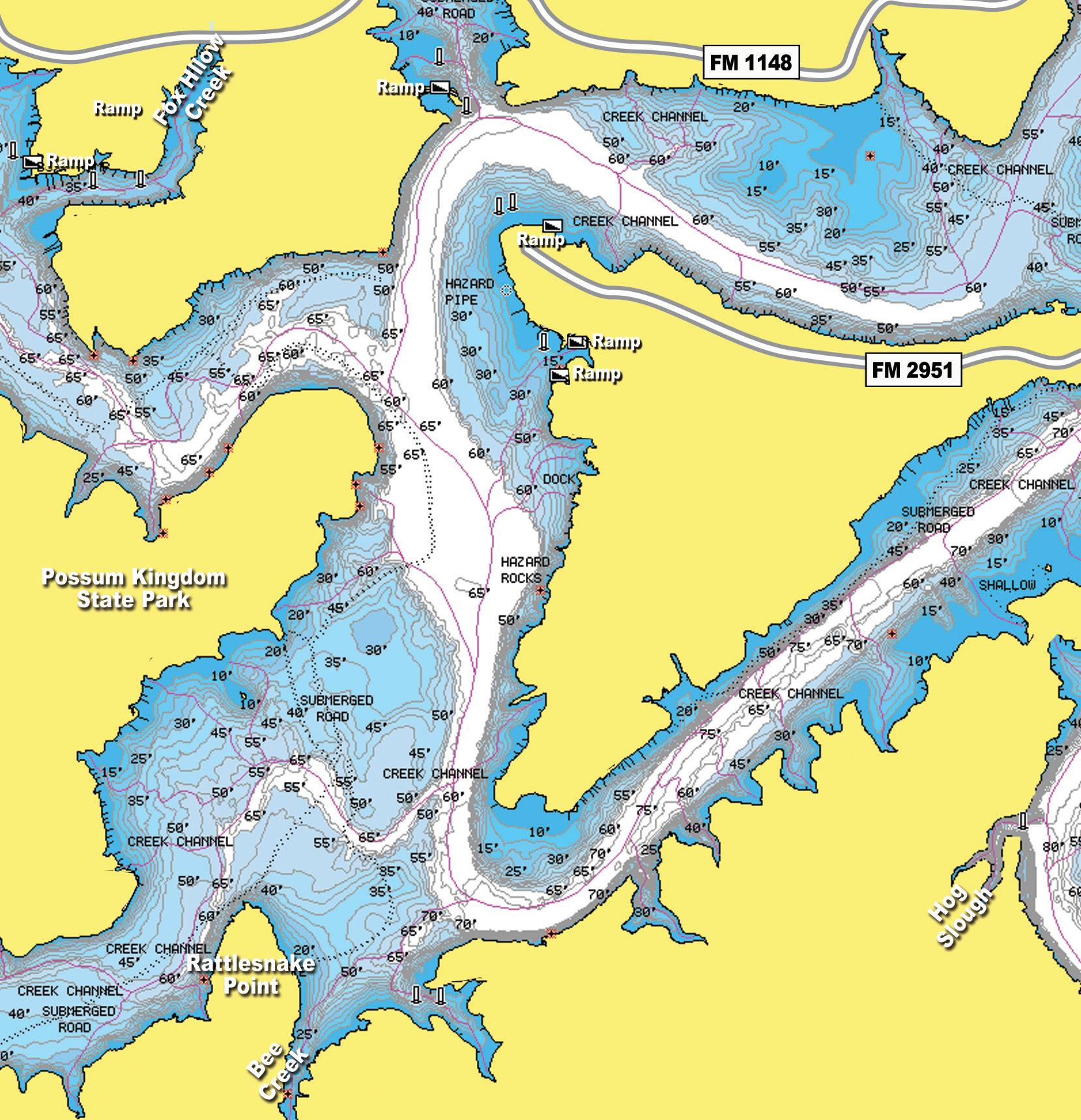
SURFACE
POSSUM KINGDOM’S SHORELINE IS A mix of rocky and vegetation covered


shores, scenic rock cliffs and bluffs. Striped, white and largemouth bass dominate, with good catfish and fair crappie action. Artificial habitat has been placed in the reservoir. See this symbol... ...on the map.














The following pages contain TIDE and SOLUNAR predictions for our Base Point, Galveston Channel (N 29.317, W 94.88)
Tidal movement and daily phases of the moon have varying degrees of influence on many fish and game species.
AM & PM MINOR phases occur when the moon rises and sets. These phases last 1 to 2 hours.
AM & PM MAJOR phases occur when the moon reaches its highest point overhead as well as when it is “underfoot” or at its highest point on the exact opposite side of the earth from your positoin (or literally under your feet). Most days have two Major Feeding Phases, each lasting about 2 hours.
PEAK TIMES: Our Forecast Calendar uses both Tide and SoLunar projections to predict the best fishing times and days. Generally, if a SoLunar Period (Major/Minor) falls within an hour of sunrise or sunset, fishing conditions should be better. On certain days where Tidal Activity is stronger, the best fishing times may fall ouside the normal SoLunar range. While tides are not a direct factor in FRESHWATER FISHING, SoLunar Activity still accounts for increased feeding activity in freshwater species. It is also a prime factor in the movement and feeding habits of game species.



















(See Instructions for reading the Graphs on the opposite page)


TIDE PREDICTIONS are located in the White Area at the top of the Calendar Pages. You can use the CONVERSION TABLE below to make adjustments. It is keyed to 23 other tide stations along the Texas Coast (see these map icons: T1 ). Adjust low and high tide times, plus or minus in minutes, from the times given for the Base Point at Galveston Channel.












SOLUNAR ACTIVITY is shown in the Green Boxes on the Calendar pages. Moon Overhead and Underfoot times are given in the SoLunar Box and illustrated on the Fishing Graph.
Use the SOLUNAR ADJUSTMENT SCALE on the map below to adjust times for points East and West of our Base Point at Galveston Channel.





























Sunrise: 6:39a Set: 7:52p
Moonrise: 7:02a Set: 9:26p
AM Minor: 6:11a
AM Major: 11:52a
PM Minor: 6:41p
PM Major: 12:26p
Moon Overhead: 2:10p Moon Underfoot: 1:40a













Sunrise: 6:38a Set: 7:53p Moonrise: 7:52a Set: 10:40p AM Minor: 7:16a AM Major: 1:00a PM Minor: 7:47p PM Major: 1:31p Moon Overhead: 3:13p Moon Underfoot: 2:41a






Sunrise: 6:38a Set: 7:54p Moonrise: 8:48a Set: 11:47p AM Minor: 8:25a AM Major: 2:09a PM Minor: 8:57p PM Major: 2:41p Moon Overhead: 4:17p Moon Underfoot: 3:45a






Sunrise: 6:37a Set: 7:54p Moonrise: 9:50a Set: None AM Minor: 9:35a AM Major: 3:19a PM Minor: 10:06p PM Major: 3:50p Moon Overhead: 5:19p Moon Underfoot: 4:49a






Sunrise: 6:36a Set: 7:55p Moonrise: 10:56a Set: 12:46a AM Minor: 10:41a AM Major: 4:26a PM Minor: 11:11p PM Major: 4:56p Moon Overhead: 6:18p Moon Underfoot: 5:50a























Sunrise: 6:35a Set: 7:55p Moonrise: 12:02p Set: 1:35a AM Minor: 11:42a AM Major: 5:28a PM Minor: ----PM Major: 5:55p







Overhead: 7:13p Moon Underfoot: 6:46a Sunrise: 6:34a Set: 7:56p Moonrise: 1:05p Set: 2:16a AM Minor: 12:11a AM
























AM Minor: 5:22a
PM Minor: 5:45p






Sunrise: 6:28a Set: 8:01p Moonrise: 8:27p Set: 6:09a
AM Major: 11:33a
PM Major: 11:56p
Moon Overhead: 12:51a
Moon Underfoot: 1:15p
AM Minor: 6:09a
AM Major: -----
PM Minor: 6:34p






Sunrise: 6:24a Set: 8:06p Moonrise: 1:25a Set: 12:17p
AM Minor: 11:44a
AM Major: 5:32a
PM Minor: -----
PM Major: 5:57p Moon Overhead: 6:48a Moon Underfoot: 7:13p








Sunrise: 6:21a Set: 8:10p Moonrise: 5:36a Set: 8:13p
AM Minor: 4:51a
AM Major: 11:07a
PM Minor: 5:22p
PM Major: 11:38p
Moon Overhead: 12:51p
Moon Underfoot: 12:20a












Sunrise: 6:28a Set: 8:02p
Moonrise: 9:25p Set: 6:46a
PM Major: 12:22p Moon Overhead: 1:38a Moon Underfoot: 2:03p

AM Minor: 7:02a
AM Major: 12:49a
PM Minor: 7:27p
PM Major: 1:14p






Sunrise: 6:24a Set: 8:06p Moonrise: 2:01a Set: 1:20p AM Minor: 12:11a AM Major: 6:23a PM Minor: 12:35p PM Major: 6:47p Moon Overhead: 7:37a Moon Underfoot: 8:01p

AM Minor: 5:53a
AM Major: -----
PM Minor: 6:26p




Sunrise: 6:21a Set: 8:10p
Moonrise: 6:29a Set: 9:25p
PM Major: 12:42p
Moon Overhead: 1:56p
Moon Underfoot: 1:23a











Sunrise: 6:27a Set: 8:02p
Moonrise: 10:21p Set: 7:29a
Moon Overhead: 2:28a
Moon Underfoot: 2:54p

AM Minor: 7:57a
AM Major: 1:44a
PM Minor: 8:23p
PM Major: 2:10p






Sunrise: 6:23a Set: 8:07p
Moonrise: 2:34a Set: 2:24p
AM Minor: 12:58a
AM Major: 7:09a
PM Minor: 1:21p
PM Major: 7:33p
Moon Overhead: 8:25a
Moon Underfoot: 8:49p


AM Minor: 7:00a
AM Major: 12:44a
PM Minor: 7:33p
PM Major: 1:17p




Sunrise: 6:21a Set: 8:11p
Moonrise: 7:30a Set: 10:30p
Moon Overhead: 3:00p
Moon Underfoot: 2:28a











Sunrise: 6:27a Set: 8:03p
Moonrise: 11:14p Set: 8:18a
Moon Overhead: 3:20a
Moon Underfoot: 3:46p






Sunrise: 6:23a Set: 8:07p
Moonrise: 3:05a Set: 3:28p
AM Minor: 1:41a
AM Major: 7:53a
PM Minor: 2:05p
PM Major: 8:17p
Moon Overhead: 9:12a
Moon Underfoot: 9:37p


AM Minor: 8:09a
AM Major: 1:54a
PM Minor: 8:40p
PM Major: 2:25p


Sunrise: 6:20a Set: 8:11p
Moonrise: 8:36a Set: 11:25p
Moon Overhead: 4:03p

Moon Underfoot: 3:32a





Sunrise: 6:26a Set: 8:04p
Moonrise: None Set: 9:12a
AM Minor: 8:55a
AM Major: 2:42a
PM Minor: 9:22p
PM Major: 3:08p
Moon Overhead: 4:12a
Moon Underfoot: 4:39p






Sunrise: 6:23a Set: 8:08p
Moonrise: 3:38a Set: 4:34p
AM Minor: 2:24a
AM Major: 8:36a
PM Minor: 2:49p
PM Major: 9:01p
Moon Overhead: 10:01a
Moon Underfoot: 10:27p




AM Minor: 9:16a






Sunrise: 6:25a Set: 8:04p Moonrise: 12:03a Set: 10:11a AM Minor: 9:53a AM Major: 3:40a
Minor: 10:19p
Major: 4:06p






Sunrise: 6:22a Set: 8:09p Moonrise: 4:12a Set: 5:44p
AM Minor: 3:08a AM Major: 9:21a PM Minor: 3:34p PM Major: 9:48p Moon Overhead: 10:54a
11:21p





Sunrise: 6:20a Set: 8:12p
Moonrise: 9:44a Set: None
AM Major: 3:02a PM Minor: 9:45p PM Major: 3:30p Moon Overhead: 5:01p Moon Underfoot: 4:33a


















































































Sunrise: 6:19a Set: 8:17p
Moonrise: 7:18p Set: 4:45a
AM Minor: 4:08a
AM Major: 10:20a
PM Minor: 4:32p
PM Major: 10:44p
Moon Overhead: None
Moon Underfoot: 11:59a







Sunrise: 6:19a Set: 8:19p
Moonrise: 12:02a Set: 11:13a
AM Minor: 10:25a
AM Major: 4:13a
PM Minor: 10:49p
PM Major: 4:37p
Moon Overhead: 5:35a
Moon Underfoot: 5:58p





Sunrise: 6:20a Set: 8:21p Moonrise: 4:14a Set: 7:02p
AM Minor: 3:40a
AM Major: 9:56a
PM Minor: 4:11p
PM Major: 10:27p
Moon Overhead: 11:35a
Moon Underfoot: None






Sunrise: 6:22a Set: 8:21p
Moonrise: 11:37a Set: None
AM Minor: 10:32a
AM Major: 4:22a
PM Minor: 10:54p
PM Major: 4:43p
Moon Overhead: 6:01p
Moon Underfoot: 5:40a

AM Major: 11:07a PM Minor: 5:20p





Sunrise: 6:19a Set: 8:17p Moonrise: 8:15p Set: 5:26a AM Minor: 4:54a
PM Major: 11:33p Moon Overhead: 12:24a Moon Underfoot: 12:49p





Sunrise: 6:19a Set: 8:17p
Moonrise: 9:10p Set: 6:14a
AM Minor: 5:45a
AM Major: 11:59a
PM Minor: 6:12p
PM Major: -----
Moon Overhead: 1:15a
Moon Underfoot: 1:42p





Sunrise: 6:19a Set: 8:18p
Moonrise: 10:01p Set: 7:07a
AM Minor: 6:40a
AM Major: 12:26a
PM Minor: 7:07p
PM Major: 12:53p
Moon Overhead: 2:08a
Moon Underfoot: 2:35p
AM Minor: 7:37a
AM Major: 1:23a
PM Minor: 8:03p
PM Major: 1:50p






Sunrise: 6:19a Set: 8:19p Moonrise: 12:35a Set: 12:15p
AM Minor: 11:17a
AM Major: 5:05a
PM Minor: 11:40p
PM Major: 5:28p
Moon Overhead: 6:22a Moon Underfoot: 6:45p



PM Minor: 5:11p



Sunrise: 6:20a Set: 8:21p Moonrise: 5:10a Set: 8:10p AM Minor: 4:39a
AM Major: 10:55a
PM Major: 11:27p
Moon Overhead: 12:39p
Moon Underfoot: 12:07a






Sunrise: 6:22a Set: 8:21p Moonrise: 12:32p Set: 12:18a
AM Minor: 11:17a
AM Major: 5:07a
PM Minor: 11:38p
PM Major: 5:28p
Moon Overhead: 6:42p
Moon Underfoot: 6:22a






Sunrise: 6:19a Set: 8:20p
Moonrise: 1:06a Set: 1:17p
AM Minor: -----
AM Major: 5:54a
PM Minor: 12:05p
PM Major: 6:17p
Moon Overhead: 7:08a
Moon Underfoot: 7:31p


AM Minor: 5:41a
AM Major: 11:57a
PM Minor: 6:13p
PM Major: 12:29p




Sunrise: 6:21a Set: 8:21p
Moonrise: 6:14a Set: 9:10p
Moon Overhead: 1:43p
Moon Underfoot: 1:12a






Sunrise: 6:23a Set: 8:21p
Moonrise: 1:25p Set: 12:45a
AM Minor: 11:59a
AM Major: 5:49a
PM Minor: -----
PM Major: 6:09p
Moon Overhead: 7:21p
Moon Underfoot: 7:01a





Sunrise: 6:19a Set: 8:18p
Moonrise: 10:46p Set: 8:05a
Moon Overhead: 3:02a
Moon Underfoot: 3:28p






Sunrise: 6:19a Set: 8:20p
Moonrise: 1:37a Set: 2:20p
AM Minor: 12:28a
AM Major: 6:40a
PM Minor: 12:52p
PM Major: 7:04p
Moon Overhead: 7:54a
Moon Underfoot: 8:18p


AM Minor: 6:45a
AM Major: 12:30a
PM Minor: 7:15p
PM Major: 1:00p




Sunrise: 6:21a Set: 8:21p
Moonrise: 7:22a Set: 10:01p
Moon Overhead: 2:44p
Moon Underfoot: 2:14a

AM Minor: 12:18a
AM Major: 6:29a
PM Minor: 12:39p
PM Major: 6:49p





Sunrise: 6:23a Set: 8:21p
Moonrise: 2:19p Set: 1:11a
Moon Overhead: 8:02p
Moon Underfoot: 7:41a





Sunrise: 6:19a Set: 8:18p
Moonrise: 11:26p Set: 9:07a
AM Minor: 8:34a
AM Major: 2:21a PM Minor: 9:00p PM Major: 2:47p Moon Overhead: 3:55a
4:20p






Sunrise: 6:19a Set: 8:20p
Moonrise: 2:09a Set: 3:26p
AM Minor: 1:12a
AM Major: 7:25a
PM Minor: 1:38p
PM Major: 7:50p
Moon Overhead: 8:43a
Moon Underfoot: 9:09p







Sunrise: 6:21a Set: 8:21p
Moonrise: 8:31a Set: 10:43p
AM Minor: 7:48a
AM Major: 1:34a
PM Minor: 8:16p
PM Major: 2:02p
Moon Overhead: 3:41p
Moon Underfoot: 3:13a

AM Minor: 12:56a
AM Major: 7:07a
PM Minor: 1:17p
PM Major: 7:28p













6:20a Set: 8:20p
2:25p






Sunrise: 6:21a Set: 8:21p Moonrise: 9:37a Set: 11:19p AM Minor: 8:48a AM Major: 2:35a
Minor: 9:13p
3:00p
4:07a






Sunrise: 6:24a Set: 8:21p
Moonrise: 3:13p Set: 1:39a
Moon Overhead: 8:44p
Moon Underfoot: 8:22a




























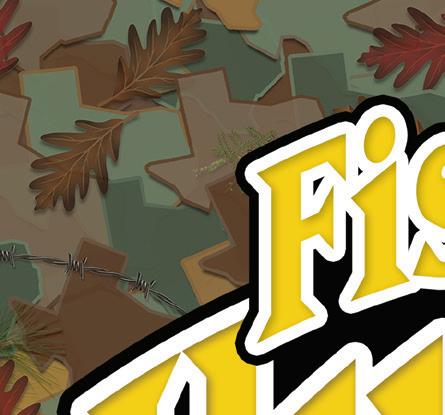





meets skill, one woman stands out: Michelle Rathkamp—a force of nature whose prowess in hunting doesn’t just earn respect, it commands it. As an avid angler who’s spent time in the woods with a few, I can con dently say Michelle is a rare breed. Her expertise and unwavering con dence make her an unforge able companion in the great outdoors.
Each year, Michelle applies for Texas Parks and Wildlife management hunts, including the archery draws. One of the most challenging Texas Draw hunts, with an 8% success rate overall and a mere 1% success rate for nilgai, caught her a ention. When she got the email saying she’d drawn a spot for the December 16–20 hunt, she didn’t waste a second securing her permit.
Unfamiliar with the refuge and the speci c region for hunting, she eagerly anticipated the opportunity to pursue Whitetail and nilgai. Seeking guidance and information from others, she embarked on a scouting day to survey the land, searching for fresh tracks and signs of deer and nilgai, including high game trails and other indicators.
Satis ed with her chosen area, the following morning she pedaled in on her bike, and set up a pop-up blind. While observing a doe crossing her path, she later spo ed


another doe and a buck that used the same trail, yet found it challenging to get a clear shot at their vitals.
On the second day, Michelle le her
blind and positioned herself under some trees and brush along the trail. Concealed in the foliage, she heard a whitetail blowing. Initially unable to spot the source, she quickly realized it was a young buck expressing its disapproval of the pop-up blind she had le out.
A er the buck made a swi exit, she retrieved her blind and repositioned it under a nearby tree. is gave her two shooting lanes, one on the le and one on the right.
Later that day, a doe unexpectedly appeared—not on the anticipated trail, but to her right, less than 20 yards away. It was evident that the doe, like the buck earlier, was unse led by her pop-up blind. Michelle folded the blind and retrieved a camo cloth from her backpack, seeking a location that o ered both cover and clear shooting lanes.
She found a large mesquite tree with some grass on one side. ere, she constructed a makeshi blind using dead limbs, the tree, and nearby brush to secure the cloth and protect it from the wind. is two-sided impromptu blind seemed perfect, granting her an excellent eld of vision with 90-degree shooting lanes to her right and le .



Michelle Rathkamp secured a place on a TPWD draw archery hunt last December, and came away with a rare (one-percent success rate) nilgai kill.

On the third day, the morning was slow, and she only spo ed a pig, a coyote, and a couple of distant whitetails walking on a trail.
e fourth day began with rain, which boosted Michelle’s prospects, as she suspected that many other hunters had chosen to sleep in due to the weather.
Once the rain subsided, a boar passed by, but she chose not to take the shot. Later, she noticed movement to her le , behind some trees and brush, but was unable to discern what it was. Using her binoculars, she identied a cow nilgai with a calf, marking her rst in-person sighting of a nilgai.
e cow approached, stopping about 25 yards away, and stared at her. As she waited for the cow to be distracted, she prepared to draw her bow. However, as she began to draw, the sound of her jacket startled the cow, causing it to ee. While she regre ed not being more cautious about the noise of her clothing, the cold and wet weather le li le choice. e rest of the day was uneventful, but tough in the face of continued frigid conditions.
On the h and nal day, she woke up early, mentally preparing herself to make the most of the day. She encountered a coyote running toward her, but it quickly turned and ed once it realized she was there. Despite this, she remained hopeful.
Later, she noticed the presence of some nilgai calves and a cow. She prepared her bow and waited for an opportunity to draw on them, but they moved o in a di erent direction.
As the animal activity slowed, she spent time deep in thought, engaging in internal dialogue and observing the surrounding environment. Suddenly, a cow nilgai appeared, about 30 yards away. Her heart racing, Michelle eagerly waited for the cow to approach. But it walked out of her shooting range.
She debated whether to stay put or a empt to stalk the cow, then decided to move toward cover. When she returned to her blind, the cow appeared again, standing behind a tree. She waited for the right moment to draw her bow and set her sights on the approaching cow.
When the cow stopped roughly 20 yards







away, she took the shot, and her arrow struck the cow’s chest. She heard the impact and saw the cow ee, mentally marking the last place she saw it. She waited a short while and then began to search for the cow.
She found blood and tracked it using her onX hunting app, eventually discovering the cow less than 20 yards away, having successfully completed her hunt.
She marked the cow on her on Xmap, then made her way back to her blind to gather her gear, knife and game bag, planning to walk straight in from the trail to retrieve the meat.
Using the onX app, she relocated the cow and began to quarter her, managing to cut o both hind quarters and a shoulder. Realizing she couldn’t carry all three quarters by herself, she packed the shoulder and a hind quarter in her bag and headed to her bike. Despite ge ing turned around a few times, she eventually made it to the main trail where her bike was waiting. She wrapped the quarters in the cloth from her blind, hoping to retrieve the rest of the meat before dark and before coyotes found it.
While wrapping up the meat, she noticed two men approaching down the trail with e-bikes and a cart. (Michelle, was one of the only ones in the woods at the time of this hunt with a good old fashioned pedal bike.)




With a sense of relief, she accepted the bikers’ unexpected help. Together, they retrieved the cow and got her back to Michelle’s truck.
Re ecting on the experience, she found the biking in and out during the mornings and evenings to be the most challenging part. e physical exertion took a toll, especially in the rain and mud, making her consider investing in an e-bike for future hunts with similar transport requirements.
Despite the hardships, she was proud of the e ort she put in, arriving at her blind early every morning and staying until a er sunset. She had even made meaningful connections with the wildlife and deepened her spirituality through conversations with nature and with God. And despite not having success until the nal day, she was content with the experience and looked forward to applying for the same hunt in the future.

story by LEA ANNE POWELL •






Spring




Young Adam Sana caught this nice bass in the Woodson Reserve neighborhood pond near









Port O’Connor

Eleven-year-old Aiden Matey with a 29-redfish he caught while fishing at Port O’Connor













Eight-yearold Alana Ray with her first bass—a 6.5 pounder (check GIVE US YOUR



Lovelady


Spring. the scale!).



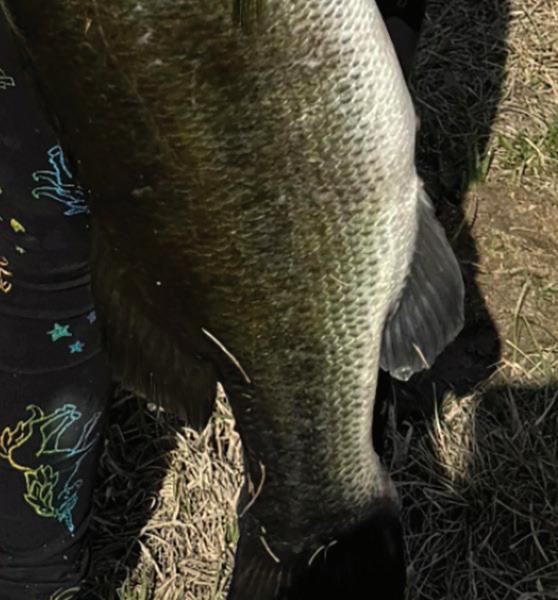



Mason County
Hadley York shot this 13-point buck, with an 18.5-inch spread, hunting in Mason County. Only her second deer!










Undisclosed




Thirteen-year-old Reid McKallip bagged his first whitetail doe last season.













:: by PAUL FUZINSKI TF&G Contributing Editor
TEXAS IS KNOWN FOR ITS vast landscapes and diverse wildlife, but maintaining this natural heritage requires continuous conservation e orts. Kyle Hand, the statewide game bird specialist with Texas Parks and Wildlife Department, shared his expertise on wild turkey conservation in a recent interview, highlighting the challenges and strategies involved in preserving these iconic birds.
Kyle’s primary role is to support various program leaders within the small game program, such as those focusing on turkeys and waterfowl, to implement e ective conservation practices. He emphasizes that habitat degradation and fragmentation are the most pressing issues a ecting wildlife populations in Texas.
EASTERN TURKEYS (Meleagris gallopavo silvestris):
Size and Appearance: Eastern turkeys are generally the largest of the wild turkey subspecies. ey have a more robust build compared to their Rio Grande counterparts. Eastern turkeys typically have darker, chestnut-colored feathers, especially on the tail fan and coverts.
Behavior and Adaptability: Eastern turkeys exhibit a high degree of adaptability. ey are known for their ability to thrive in various environments, from dense forests to more open woodlands. is adaptability is partly due to their exible roosting habits, as they do not rely heavily on speci c roost sites and can move between di erent trees night a er night.









Habitat Preferences: ese turkeys are commonly found in the eastern parts of Texas, particularly in the piney woods region. ey prefer areas with abundant cover and a mix of open spaces and dense vegetation, which provides both food and protection.
Monitoring and managing diseases in wild turkey populations is an ongoing e ort.


RIO GRANDE TURKEYS (Meleagris gallopavo intermedia):
Size and Appearance: Rio Grande turkeys are slightly smaller than eastern turkeys. ey exhibit a range of feather coloration, appearing lighter with a more varied plumage. eir subspecies name “intermedia” re ects their intermediate characteristics, as they can exhibit traits seen in both eastern and Merriam’s turkeys.
Behavior and Water Dependency: Unlike eastern turkeys, Rio Grande turkeys have a strong dependency on water sources. ey are o en found roosting near water, such as rivers, streams, or ponds. is dependency on water dictates their habitat preferences and roosting sites.
Habitat Preferences: ese turkeys are well-suited to the more arid regions of Texas, including central Texas and the post oak savanna. ey prefer open country with sca ered trees, which provide necessary roost sites. eir habitat selection is in uenced by the availability of water and suitable roosting trees, making them more predictable in their roosting behavior compared to eastern turkeys.
e aim of wild turkey restoration e orts in Texas is to establish huntable, sustainable populations, ensuring ecological balance, recreational opportunities, and economic bene ts. is involves creating and preserving habitats that support the turkeys’ life cycles, from nesting and brood-rearing to foraging and roosting.
Texas’s diverse habitats present unique challenges. According to Hand, the decline of grassland-dependent birds, including wild turkeys, is largely due to habitat loss. In East Texas, wild turkeys struggle with limited brood-rearing and nesting habitats. Early successional habitats, like those formed 3 to 5 years post-burn, provide essential cover and food sources for these birds.
In South Texas, the availability of large roosting trees is crucial, while in the rolling plains, a mix of woody and herbaceous growth supports turkey populations. Hand notes that maintaining these varied habitats is key to ensuring the survival of wild turkeys across the state.
Predator management is another important aspect of conservation. While predators are a factor, due to the overabundant amount of food available on ranches with feeders available across the state, Hand believes habitat degradation plays a more signi cant role in population declines. A combination of e ective habitat management and targeted predator control can bene t wild turkey populations.
Texas has shi ed to a “super stocking” strategy to improve the success rate of reintroducing wild turkeys. Super stocking is a conservation technique used to boost turkey populations in areas where they have signi cantly declined or disappeared. is method involves releasing many wild turkeys, typically from regions with healthy populations, into the targeted areas to quickly establish a sustainable and breeding population.
Private landowners play a crucial role in habitat conservation. Hand encourages landowners to contact their local biologists for assistance with habitat improvement projects. e department has also started using Pi man-Robertson funds to provide cost-share assistance to landowners, enhancing the department’s ability to support conservation e orts on private lands.
Habitat barriers, like those around Toledo Bend, limit turkey movement and connectivity between populations.
Drought and habitat changes also impact reproduction rates. Hand believes ongoing research will help identify and address the underlying issues a ecting wild turkey populations.

Wild turkey conservation in Texas is a complex and ongoing e ort. By addressing habitat degradation, managing predators appropriately, and supporting private landowners, the Texas Parks & Wildlife Department aims to preserve these iconic birds for future generations.
Email Paul Fuzinski at ContactUs@fishgame.com

